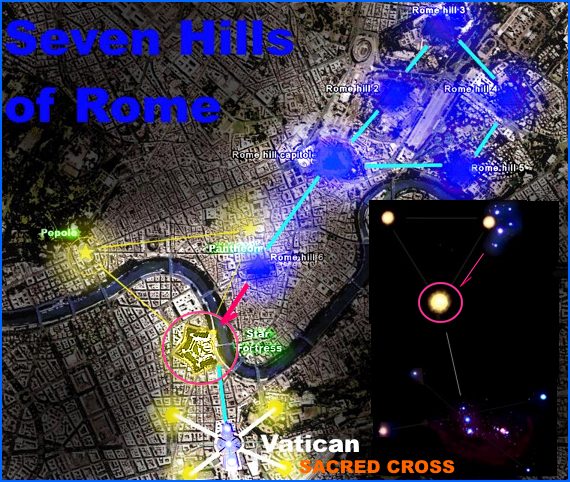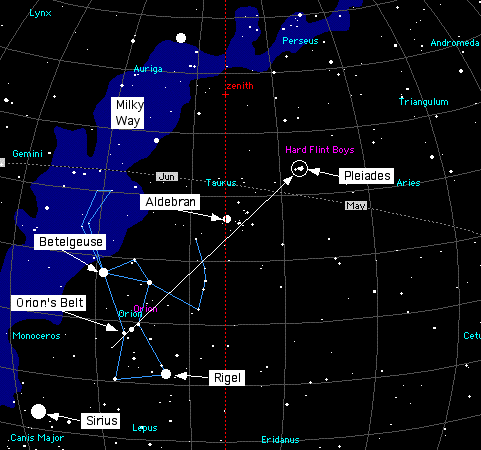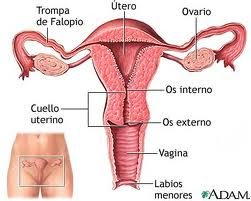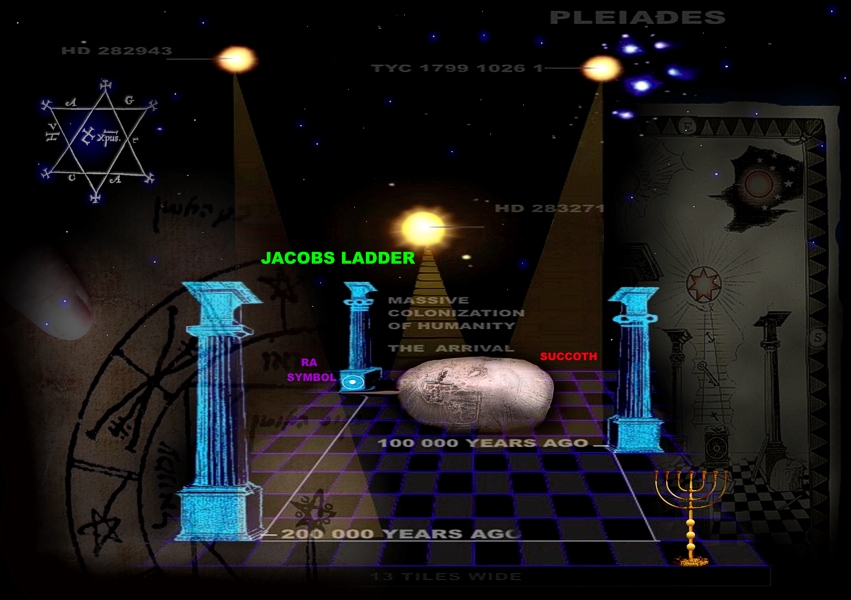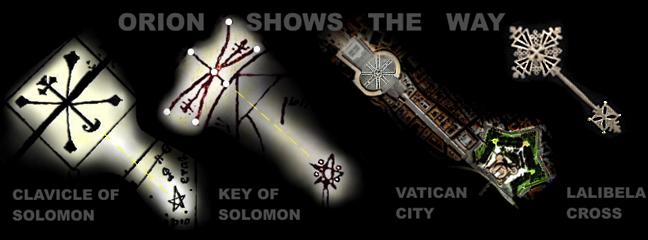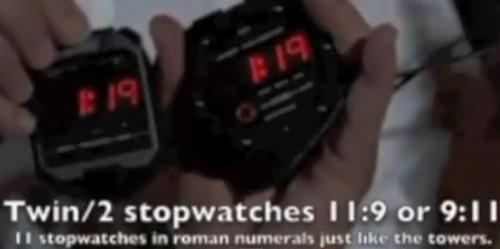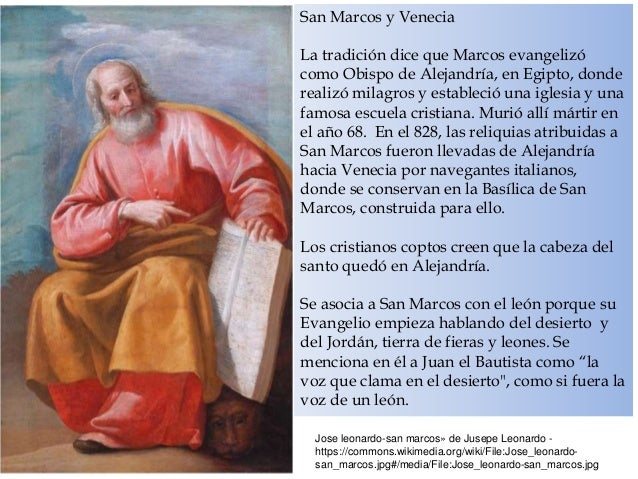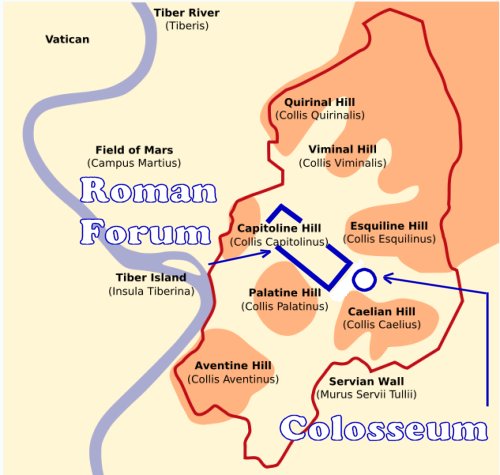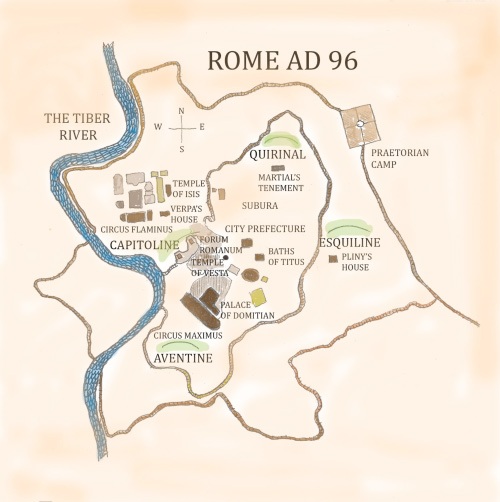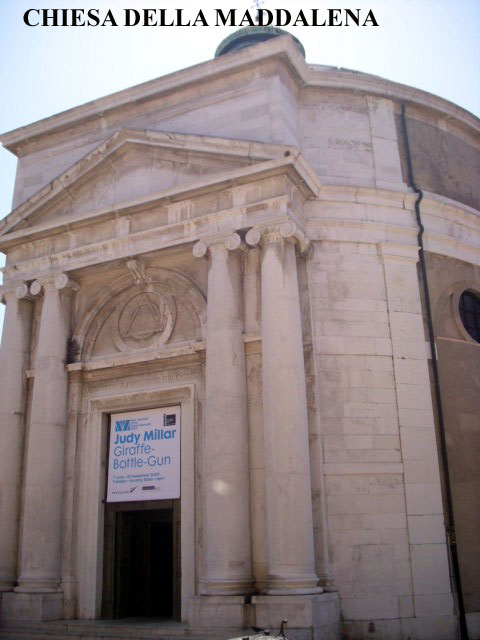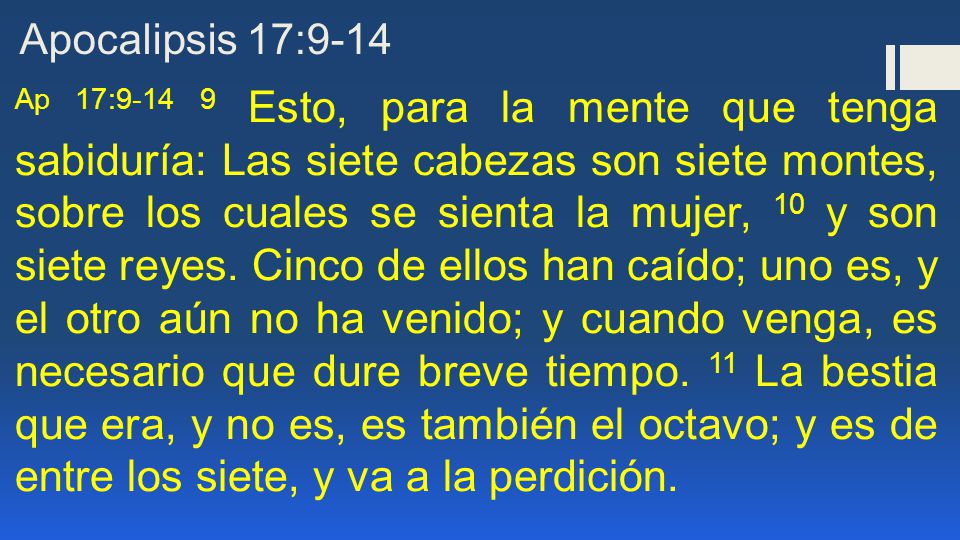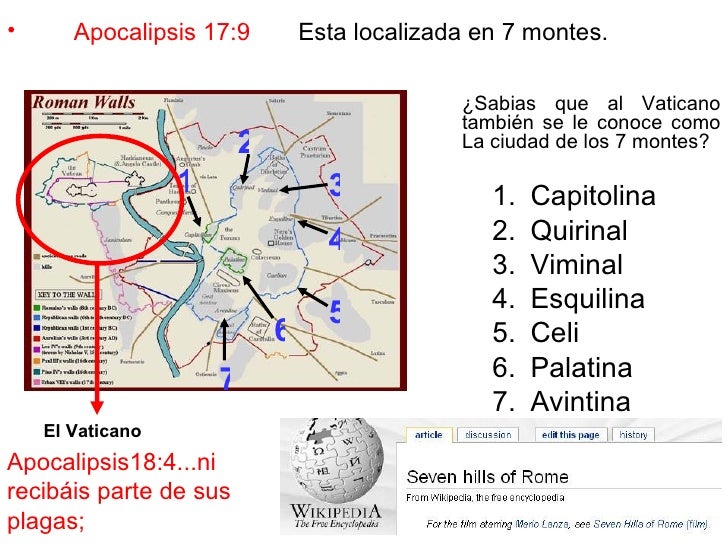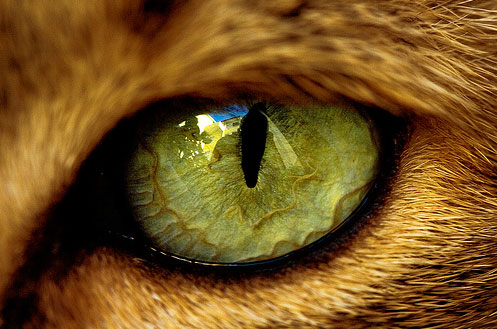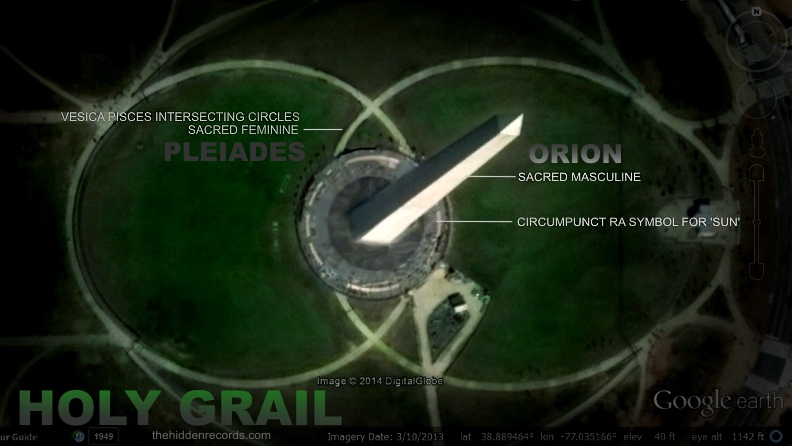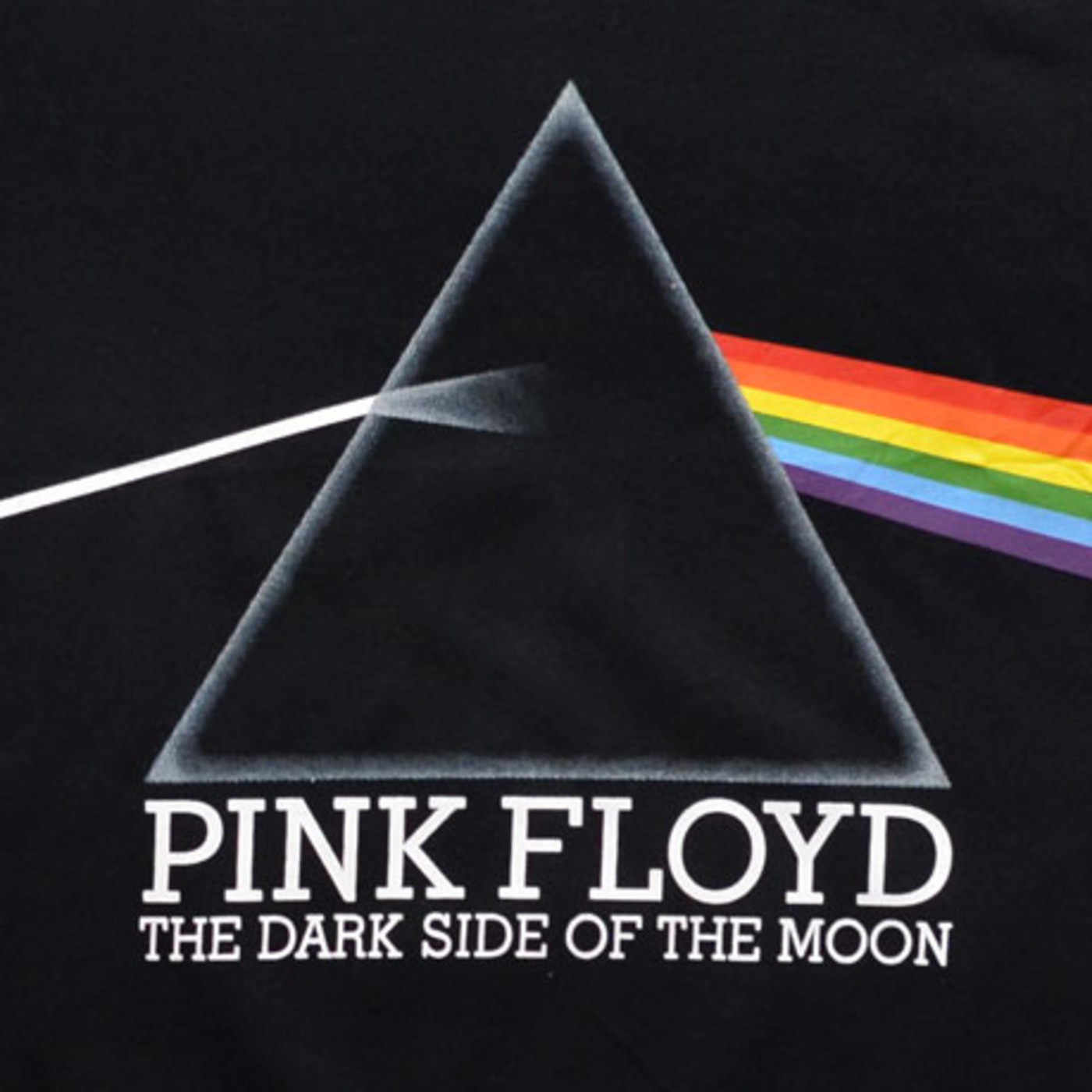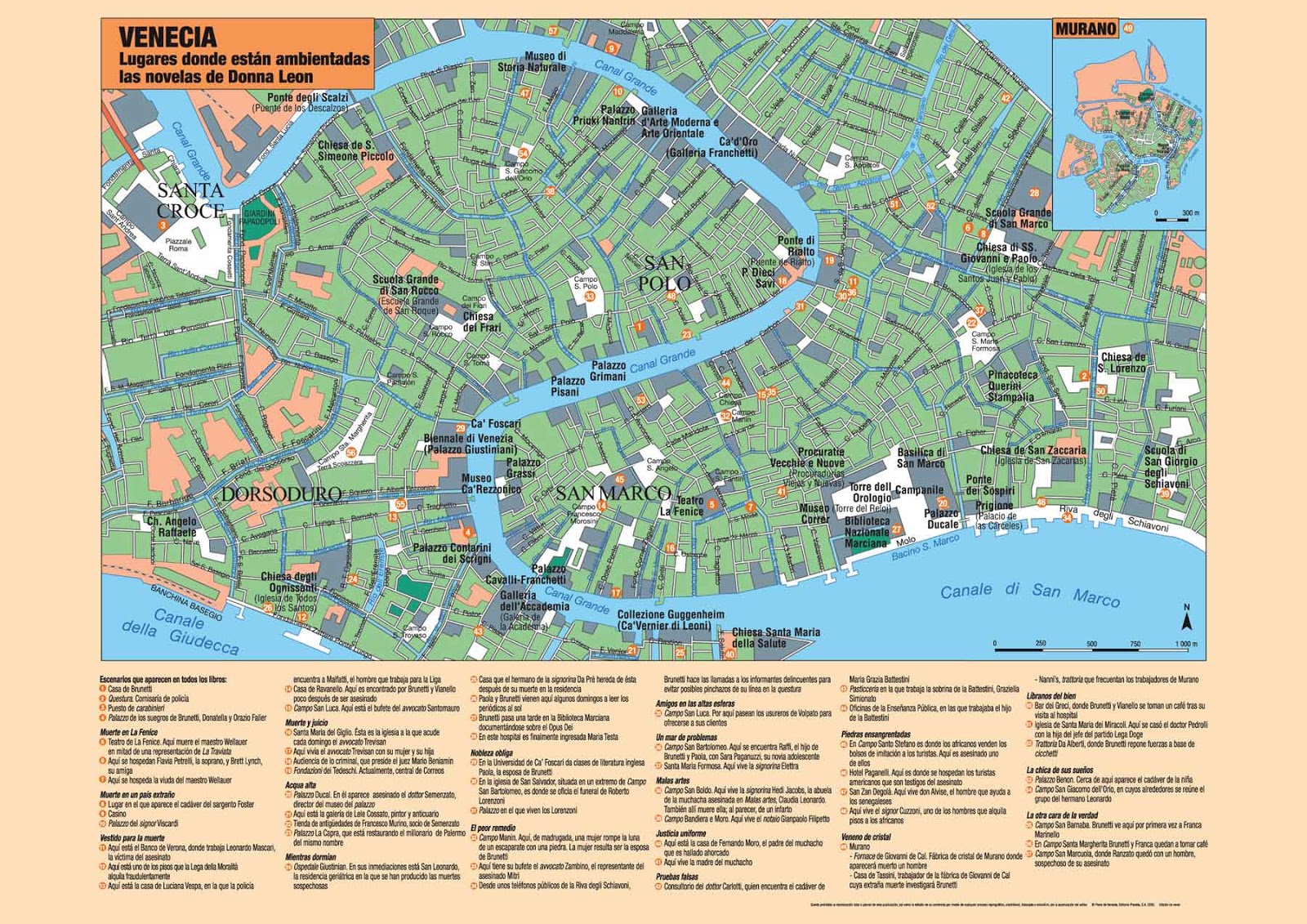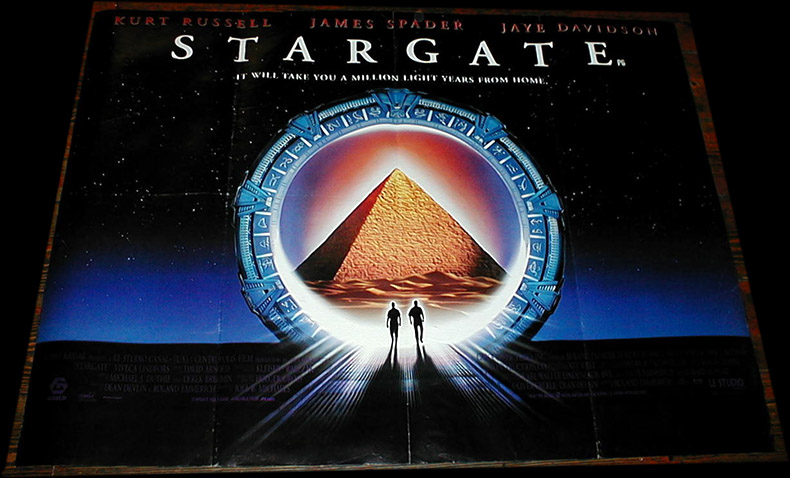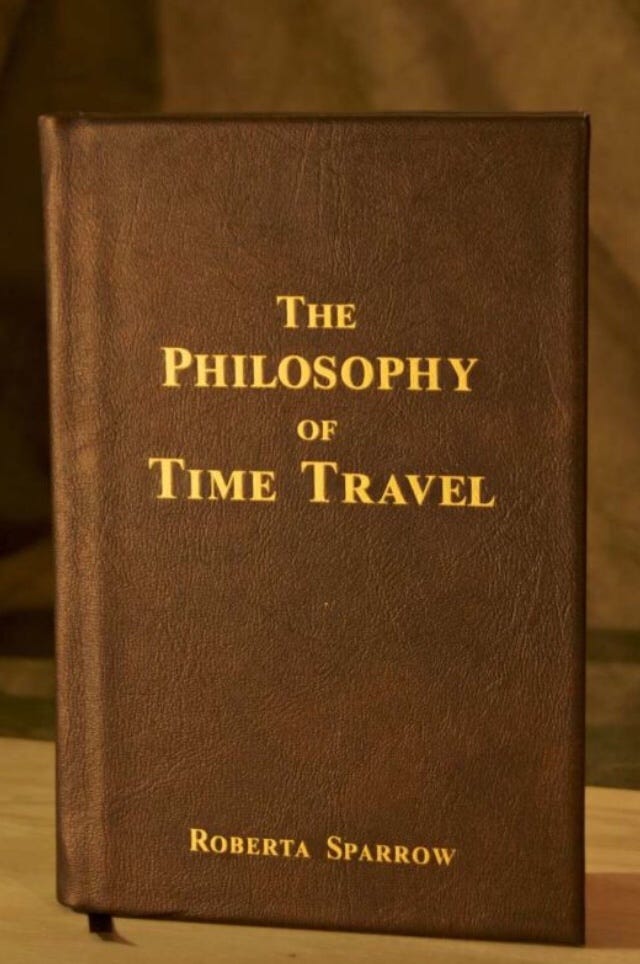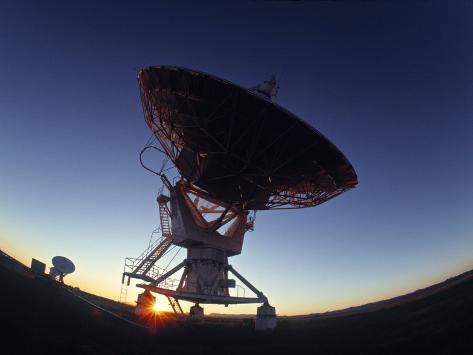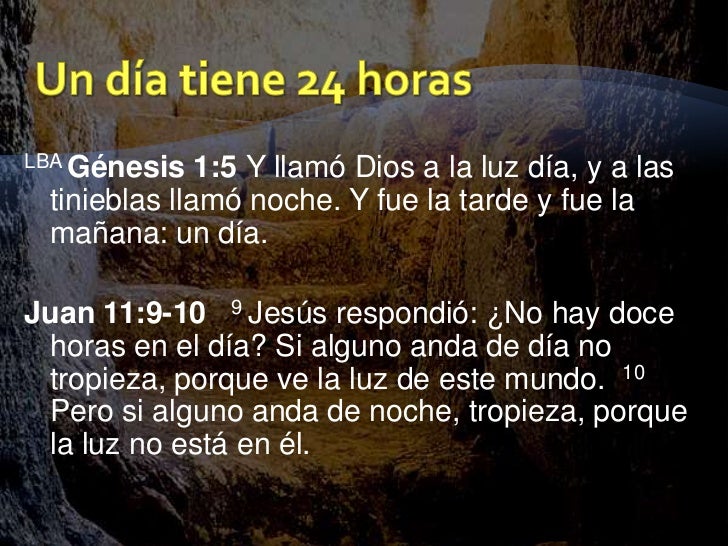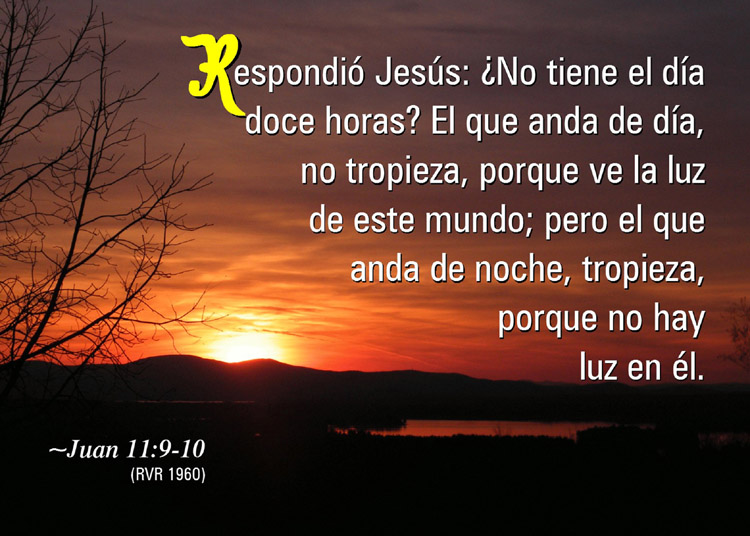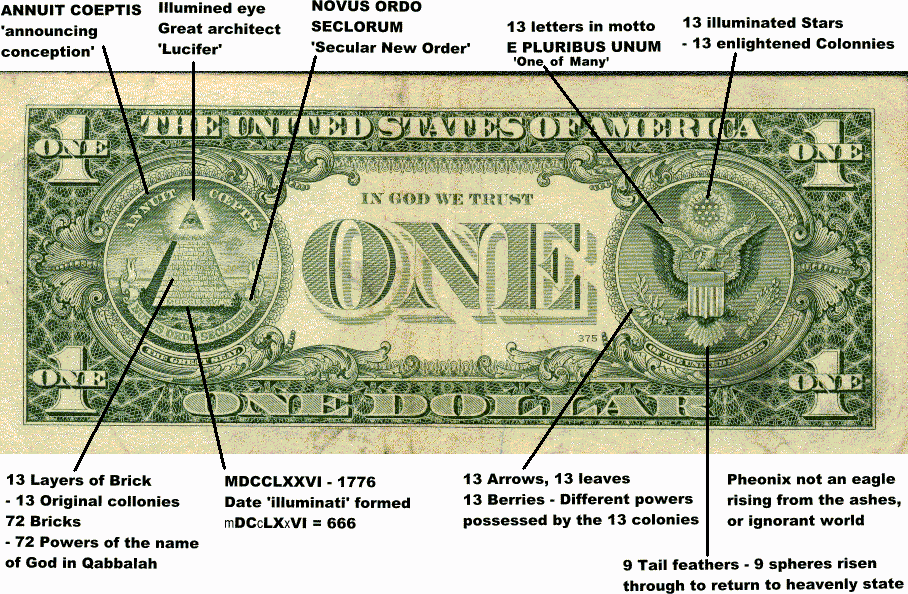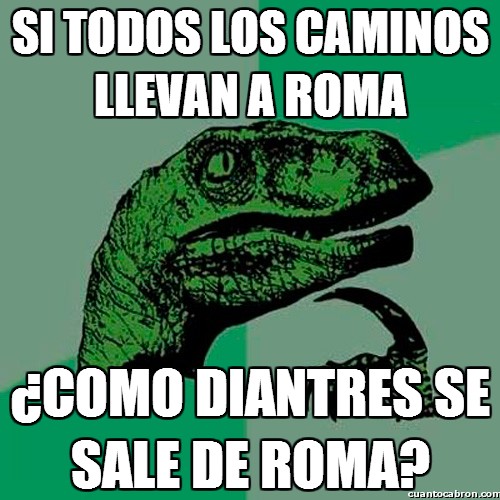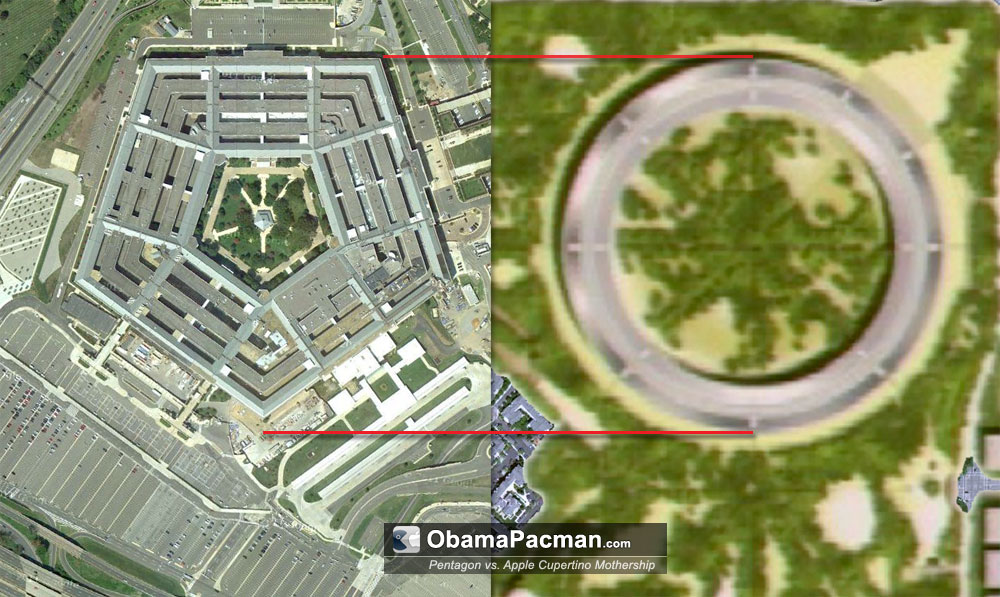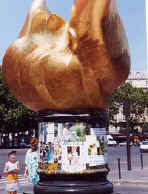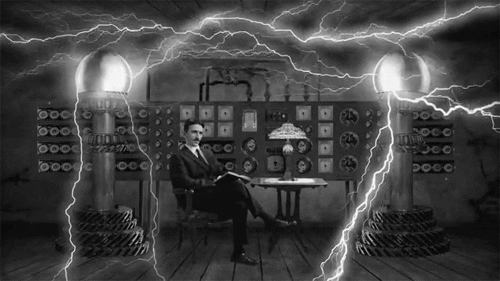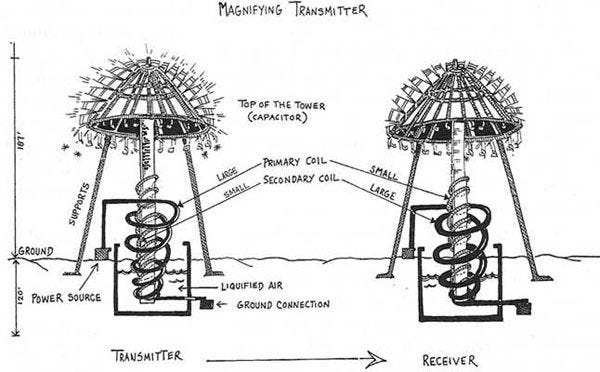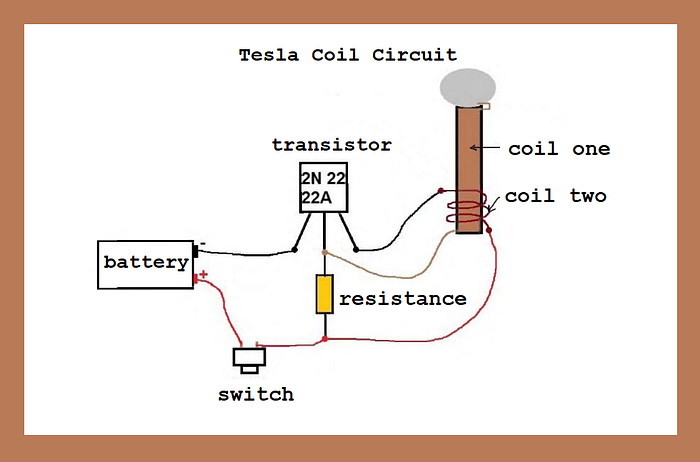|
|
General: ITALIA SIGNIFICA TORO (TOROIDE="AGUJERO DE GUSANO"=TAURO=PLEYADES=VATICANO)
Choisir un autre rubrique de messages |
|
Réponse |
Message 1 de 58 de ce thème |
|
LA PALABRA ITALIA DERIVA DEL TERMINO TORO, OSEA QUE EN ESTE CONTEXTO DICHO TERMINO EN SI MISMO ES UNA REFERENCIA A LA ATLANTIDA, OSEA A LAS HIJAS DE ATLAS, LAS MISMAS PLEYADES. ESE ES EL NEXO CON ROMA, EN EL MARCO A LAS SIETE COLINAS. TODO ES UN NEXO CON LA ATLANTIDA.
|
SIETE COLINAS / PLEYADES / CONSTELACION DEL TORO / "EXPERIMENTO FILADELFIA" / "AGUJERO DE GUSANO"
| Reply |
Message 10 of 10 on the subject |
|
|
El nombre Italia puede ser una buena opción de nombre para tu bebé. Elegir el nombre que tu hijo o hija llevará toda la vida es una tarea emocionante y a la vez difícil, nuestro buscador del significado de los nombres te puede ayudar con miles de opciones de nombres nacionales y extranjeros para niños y niñas. Te presentamos el origen y significado del nombre Italia.
- Historia del nombre Italia
-
Utilizado con frecuencia desde el siglo XIX en relación a la independencia de ese país
- Significado del nombre Italia
- De italos, "toro joven"
- Origen del nombre Italia
- Griego
- Jeroglífico del nombre Italia
 - Personajes célebres con el nombre Italia
-
- Itziar Miranda, actriz española (1978).
|
|
|
|
|
|
Réponse |
Message 44 de 58 de ce thème |
|
Tauro (constelación)
Para otros usos de este término, véase Tauro. Tauro o Taurus (símbolo  , Unicode ♉) es una constelaciónzodiacal; su nombre en latín es Taurus y en español toro. Destaca en el cielo invernal, entre Aries al oeste y Géminis al este. Al norte se encuentran Perseo y Auriga; al sureste Orión, y al suroeste Eridanus yCetus. , Unicode ♉) es una constelaciónzodiacal; su nombre en latín es Taurus y en español toro. Destaca en el cielo invernal, entre Aries al oeste y Géminis al este. Al norte se encuentran Perseo y Auriga; al sureste Orión, y al suroeste Eridanus yCetus.
En el zodíaco es el segundo signo. Como tal, en la antigüedad contenía la constelación del mismo nombre, pero la precesión de los equinocciosha hecho que el signo de Tauro se encuentre ocupado por la constelación de Aries. Actualmente el sol brilla sobre Tauro entre el 14 de mayo y el 21 de junio.
Características destacables[editar]
Aldebarán (α Tau), laestrella más brillante de laconstelación, es unagigante roja de primera magnitud; forma unsistema binario con una tenue enana roja. Elnath(β Tau), segunda estrella más brillante, forma los cuernos del toro junto a ζ Tauri; esta última es una de las estrellas Be más estudiadas. Dos estrellas variables en la constelación, T Tauri y RV Tauri, son los prototipos de sendos grupos de estrellas que llevan sus nombres.
Tauro también contiene dos de los cúmulos abiertos más conocidos del firmamento: lasPléyades, donde cabe señalar a Merope (23 Tau), y las Híades, cuya estrella principal es γ Tauri.
La Nebulosa del Cangrejo (M1) se localiza en esta constelación. Es un resto de supernova proveniente de la explosión de una supernova en 1054 (SN 1054). La nebulosa fue observada por vez primera en 1731 por John Bevis.
Estrellas principales[editar]
- α Tauri (Aldebarán), estrella gigante rojo-anaranjada de magnitud0,87. Tiene una tenue compañera de magnitud 13,5 a 28 segundos de arco.
- β Tauri (Elnath), gigante blanco-azulada de magnitud 1,68.
- γ Tauri (Hyadum I), gigante naranja miembro del cúmulo de las Híadesde magnitud 3,65.
- δ Tauri, en realidad tres estrellas, todas miembros de las Híades. δ1Tauri (Hyadum II) es una estrella similar a Hyadum I.
- ε Tauri (Ain), gigante amarillo-naranja miembro de las Híades con magnitud 3,53 y en donde se ha descubierto un planeta extrasolar.
- ζ Tauri, estrella binaria de magnitud 2,97 situada en el cuerno sur del toro.
- η Tauri (Alcíone), la estrella más brillante del cúmulo de las Pléyades y la tercera de la constelación con magnitud 2,85, es una joven estrella blanco-azulada.
- θ Tauri, denominación de Bayer compartida por dos estrellas distintas, θ1 Tauri y θ2 Tauri; de color naranja y blanco, respectivamente, se hallan separadas 5,6 minutos de arco y forman parte de las Híades.
- κ Tauri, estrella doble visual cuyas componentes, de color blanco, están separadas 5,6 minutos de arco.
- λ Tauri, sistema estelar triple y variable eclipsante.
- ν Tauri, estrella blanca de la secuencia principal de magnitud 3,90.
- ξ Tauri, sistema estelar cuádruple de magnitud 3,73.
- ο Tauri y π Tauri, gigantes amarillas de magnitud 3,62 y 4,69 respectivamente.
- ρ Tauri, variable Delta Scuti de magnitud 4,66.
- ω2 Tauri, estrella Am de magnitud 4,93.
- n Tauri (109 Tauri), gigante amarilla de magnitud 4,96.
- Merope (23 Tauri), estrella de las Pléyades que ilumina la nebulosa de reflexión NGC 1435.
- 10 Tauri, estrella amarilla situada a 45 años luz con un posible disco circunestelar a su alrededor.
- 30 Tauri (e Tauri), joven estrella binaria de magnitud 5,06 con una edad estimada inferior a 28 millones de años.
- 39 Tauri, enana amarilla algo más fría que el Sol de magnitud 5,90.
- 79 Tauri, estrella de las Híades rodeada por un disco de polvo circunestelar.
- 90 Tauri (c Tauri), estrella blanca de magnitud 4,27 que forma parte de las Híades.
- 111 Tauri, enana amarilla a 48 años luz del Sistema Solar.
- 139 Tauri, gigante luminosa azul de magnitud 4,82.
- T Tauri, estrella variable prototipo de una clase de estrellas en proceso de formación y que aún no han entrado en lasecuencia principal.
- Y Tauri, estrella de carbono y variable semirregular cuyo brillo varía entre magnitud 6,5 y 9,2 en un período de 241,5 días.
- RV Tauri, prototipo de estrellas variables intermedias entre las cefeidas y las variables Mira.
- RZ Tauri, binaria eclipsante de contacto en donde se produce transferencia de masa entre las dos estrellas.
- UX Tauri, sistema triple formado por tres estrellas T Tauri; alrededor de la más brillante se ha descubierto un disco protoplanetario.
- AA Tauri, estrella T Tauri que posee un disco protoplanetario en el que se han detectado moléculas orgánicas.
- CD Tauri, binaria eclipsante de magnitud 6,77.
- CE Tauri (119 Tauri), supergigante roja, una de las estrellas más grandes que se conocen.
- DG Tauri, estrella T Tauri en donde se han observado dos chorros de rayos X.
- EQ Tauri, binaria de contacto de magnitud 11,20.
- IK Tauri (NML Tauri), una de las estrellas de la rama asintótica gigante más estudiadas; es una variable Mira cuyo brillo oscila entre magnitud 10,8 y 16,5.
- HD 37124, estrella amarilla con tres planetas conocidos.
- Gliese 176 (HD 285968), enana roja con un planeta extrasolar de tipo Súper-Tierra.
- CoKu Tauri/4, joven estrella T Tauri de 1 millón de años de edad.
- Gliese 169, enana naranja distante 37,5 años luz.
- HL Tau 76 (V411 Tauri), enana blanca pulsante, variable del tipo ZZ Ceti.
Objetos profundos notables en el cielo[editar]
- Las Híades, un cúmulo abierto de estrellas que contribuye a formar la "V" en el cielo que forma el inicio de la cabeza del toro. Se encuentra a 161 años luz de distancia. Consta de 80 estrellas situadas en una esfera de 12 pársecs de diámetro.

Constelación de Tauro "El Toro" .
En la mitología griega, Tauro es la forma de toro que el dios Zeus adoptó para seducir a Europa, una mítica princesa fenicia. Tuvieron tres hijos: Minos, el legendario rey deCreta, Sarpedón y Radamantis.
Otra versión nos dice que fue la bestia que envió la diosa Hera para acabar con Orión.
Según otra versión, Tauro es Ío convertida en vaca por su amante Zeus para evitar que Hera se enterase de sus amores.
Enlaces externos[editar]
- Higino: Astronomía poética (Astronomica).
|
|
|
|
Réponse |
Message 45 de 58 de ce thème |
|
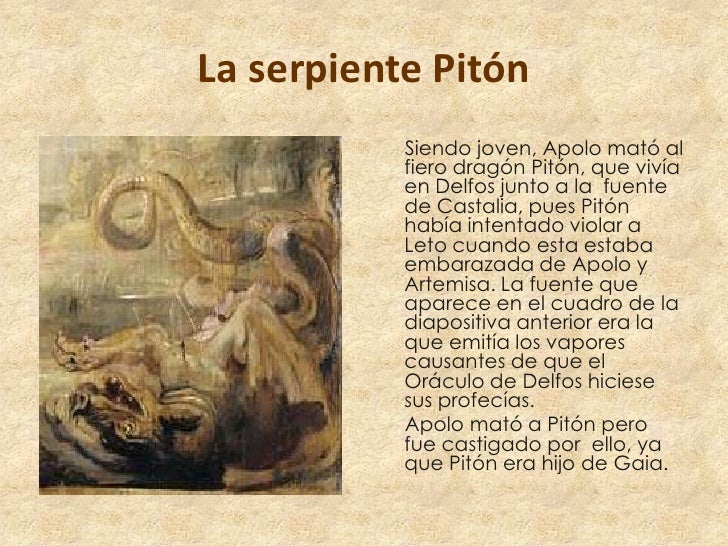
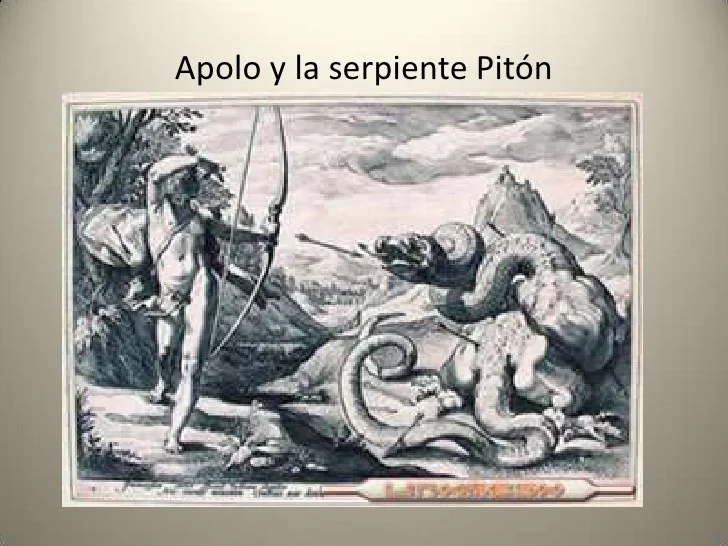
|
|
NOTEN EL NEXO DE DAN, CON LA SERPIENTE (VENECIA) Y EL CABALLO (PLAZA SAN MARCOS)
7. Génesis 49:17 Será Dan SERPIENTE junto al camino, Víbora junto a la senda, Que muerde los talones del caballo, Y hace caer hacia atrás al jinete.
VENECIA=PLAZA SAN MARCOS
VENECIA (ITALIA)
¿PORQUE LA BANDERA MEXICANA ES SIMILAR A LA ITALIANA EN EL MARCO A UNA SERPIENTE?
SABIDURIA=SABADO=LETRA S=$
|
|
|
|
|
|
| Reply |
Message 10 of 10 on the subject |
|
|
|
|
|
|
|
|
|
|
| Reply |
Message 8 of 11 on the subject |
|
|
|
|
| Reply |
Message 9 of 11 on the subject |
|
|
|
|
| Reply |
Message 10 of 11 on the subject |
|
|
|
|
| Reply |
Message 11 of 11 on the subject |
|
|
|
|
|
|
|
|
|
|
|
Réponse |
Message 46 de 58 de ce thème |
|
Mensaje de Teotihuacán para el 8 del septiembre ....Arqueoastronomía de los Dioses
En la epoca prehispanica Cholula era considerada un centro cultural y religioso tan importante como lo seria en la actualidad Chalma, Juquila o la Basilica de Guadalupe. Los guardianes a quienes estaban dedicados estos centros eran Quetzalcoatl "Señor de los comerciantes y mercaderes" y Chiconauhquiauhitl "Señor de las nueve lluvias"; los cuales substituyeron los frailes franciscanos por la Virgen de los Remedios quedando la fecha de celebración de fiesta de honor a ambos el mismo dia, es decir el 8 de septiembre.
Para tal efecto se acostumbraba a que la gente de los pueblos llegaran desde lejos y gracias a la importancia de dichos Guardianes o Señores era necesario que por lo menos una vez en su vida visitaran el lugar. Este viaje se hcia como ofrenda y todo este ritual era acompañado de musica. Tambien aprovechaban para realizar el cambio de bastones de mando los cuales podrian compararse con los cetros que en la actualidad llevan los mayordomos (persona que se encarga del cuidado del santo de la localidad). Al ser lugares tan lejanos trian consigo los productos que elaboraban y los intercambiaban con otros pueblos, el cambio era producto por producto, llevaban a cabo el trueque.
Cholula se convierte en el centro religioso más importante del valle Poblano Tlaxcalteca , por lo que fue llamada "LA CIUDAD SAGRADA DE CHOLULA".
La pirámide de Cholula está orientada con respecto a los cuatro puntos cardinales que de acuerdo con las creencias de la cultura náhuatl representa los seis rumbos o regiones del mundo :
- MICTLAMPA. (Al norte) A este rumbo se le relación con el color negro . Es el lugar de los muertos donde van los elegidos de Tonatiuh . Lugar de Mitlancihuatl y Mitlantecutli.
- HUITZTLAMPA(al sur) Lugar de Huitzilopochtli , que representa la fuerza de voluntad . Se asocia este rumbo con el color azul.
- TLAHUISTLAMPA(al oriente). Es el rumbo de luz en donde se halla Quetzalcoatl , el dios de la inteligencia , asociado al color blanco .
- CIHUATLAMPA.(al poniente) Lugar de Xipetoctec "El descarnado" (dios de la creatividad y de las mujeres guerreras muertas en el parto). Asociado este rumbo con el color rojo .
- TONALTLAMPA . (Arriba en los cielos) Donde está el dador de la energía Tonatiuh.
- TLALITLAMPA . Abajo donde se halla Tonantzin , la diosa de la tierra , de la fertilidad . Se tiene conocimiento de que el templo de Quetzalcóatl se hallaba donde actualmente está la Capilla Real .
Sobre la gran pirámide se encontró la imagen de CHICOMENAUHIQUIAHUITL , la diosa de las nueve lluvias ; a la que le ofrecían sacrificio de infantes para solicitar lluvias en las épocas en las que se cargaba la sequía , dicha imagen fue sustituída por la Virgen de Los Remedios , cuya fiesta se celebra año con año el 1° de Septiembre . Actualmente podemos admirar una iglesia sobre la cúspide de la gran pirámide que se puede interpretar como "el triunfo de la fé católica sobre la idolatría".
En la actualidad los festejos comienzan desde los primeros dias del mes de agosto siguiendo el orden de la organizacion de circular, se ofician diariamente misas costeadas por barrios, pueblos, cofradias, hermandades, sindicatos, gremios, empresas industriales, empresas comerciales, devotos y particulares, cuando es el turno de los pueblos y barrios suben con su Santo. Dichas celebraciones se prolongan hasta el 8 de Septiembre.
En la noche del 31 de Agosto se realiza "La Procesión de los Faroles" la cual consiste en un recorrido por las calles de la ciudad en la que articipan los barrios con su respectiva imagen y las imagenes de "La Circular", esta procesión tiene más de 20 años de llevarse a cabo.Hacia las 2 de la madrugada se entonan "Las Mañanitas" y durante toda la noche se realizan misas que son donadas por diversas organizaciones y feligreses, a la una de la trade del primero de Septiembre se oficia la misa solemne de los pueblos y barrios, a la que asisten para alumbrar todos los mayordomos y fiscales entre quienes se reparten el costo de la ceremonia. El 8 de Septiembre se hacen diversas misas, y como sucedía en l aepoca prehispanica, gente de diversos lugares llega a venerar y mostrarle su agradecimiento a la Virgen de los Remedios. Al bajar del "cerro" aprovechan para vender o en su defecto llevar a cabo el tradicional y ancestral trueque sobre la explanada de la Plaza de la Concordia, frente a las majestuosas 44 arcadas del portal de peregrinos. Entre los productos que podemos encontrar estan: charales blancos, carpas, quesos de Chautla, hierbas de olor y medicinales, resinas, mecapales, acocotes, vainas, azafran, cacahuates, nueces y frutas de varios lugares como San Martín, Huejotzingo y Zacatlan, además de diversos productos artesanales y decorativos como petates, chiquihuites de vara, canastas, ollas de barro, utensilios de madera, etc.
El barrio de Santa María Xixitla es el barrio que le toca subir y hacer su misa el dia 8, dicho barrio además de hacer su misa realiza "el cambio de varas de mando", es decir el cambio de mayordomo del barrio y en lugar de traer una persona para sacrificar suben al "cerro" un "panzón" que es un muñeco hecho de papel de china y cohetes que tiene dentro manzanas las cuales caen de su "panza" al finalizar su quema. Este muñeco una vez quemado es bajado y llevado hasta el barrio por las personas que se encargarán de recolectar el dinero que se necesita para su elaboración para el año siguiente
De acuerdo con la tradición religiosa de nuestro país, la Virgen del Valle es considerada como la patrona del oriente de Venezuela, siendo venerada con especial devoción en la isla de Margarita. Cada 8 de septiembre se celebra su día, fecha en la que acuden miles de peregrinos a venerarla en su santuario ubicado en el Valle de Margarita, cerca de Porlamar. Las festividades duran varios días y, en cada uno de ellos, la Virgen luce un bello traje diseñado con las telas suministradas por sus devotos.
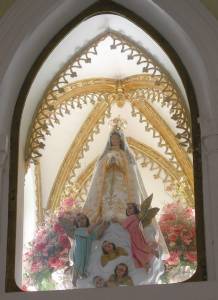
En los inicios de la conquista los españoles fundaron en la isla de Cubagua, la ciudad de Nueva Cádiz. En poco tiempo dicha ciudad creció vertiginosamente derivado de la extracción de perlas que abundaban en sus mares. Durante este período los habitantes de Nueva Cádiz encargaron a España una imagen de la Inmaculada Concepción para poner la ciudad bajo su protección. La imagen llegó a Cubagua en el año 1530, pero pocos años después, el 25 de diciembre de 1541, un huracán arrasó Nueva Cádiz y con ella la iglesia donde estaba la imagen de la Virgen. Al salvarse milagrosamente la imagen de la Virgen, los pobladores de Cubagua decidieron ponerla salvo de nuevos cataclismos, llevándola en 1542 a una hacienda en El Valle de la Isla de Margarita, donde le construyeron una pequeña ermita. Con el paso del tiempo el lugar dio el nombre a la imagen, que comenzó a llamarse la Virgen del Valle.
Iglesia de la Virgen del Valle en Margarita
El Mensaje de Teotihuacán.
En la actualidad la arqueología oficial data el origen de Teotihuacan entre los siglos I y III de nuestra era, y se cree que alcanzó en su máximo nivel de expansión la cantidad de 200.000 habitantes, con una actividad básicamente agrícola. Por motivos totalmente desconocidos esta maravillosa ciudad fue abandonada entre los años 650 y 750 DC. También se cree que sus pobladores fueron una mezcla de pueblos autóctonos de Mesoamérica, con una fuerte influencia Tolteca, un pueblo con una estructura teocrática y guerrera.
Dentro de las curiosidades que podemos encontrar en Teotihuacan, fue el descubrimiento en 1906 de una gruesa capa de Mica en la parte superior de la Pirámide del Sol. La Mica es un mineral del grupo de los Silicatos, compuesto por unas hojuelas muy brillantes, elásticas y extremadamente delgadas, pero sobre todo un elemento muy resistente a la electricidad y al paso de neutrones, siendo un perfecto aislante dentro de un reactor nuclear. Como seguramente habrá gente que asocie este hecho a una simple casualidad en la construcción de la pirámide sin ninguna importancia, basta decir que jamás se ha encontrado este mismo material en ningún otro yacimiento arqueológico Americano (existe un templo muy próximo a la Pirámide del Sol que también posee Mica), y que este tipo de Mica, sólo se puede encontrar en Brasil, y es en la actualidad uno de los más apreciados para la elaboración de aislantes eléctricos en todo el mundo.

mineral de Mica.
Un año antes de este descubrimiento, en 1905, se iniciaron las excavaciones en Teotihuacan, por parte de Leopoldo Batres, para limpiar la base y la superficie de la Pirámide del Sol. Fueron necesarios 5 años para retirar miles de toneladas de tierra dispersada artificialmente por alguna extraña razón que se encontraban sobre ella. Estaba toda su superficie cubierta por una capa de 4 metros de tierra que fueron depositados cuidadosamente, parece ser antes del abandono de la ciudad. Es como si hubiesen pretendido ocultar o aislar a la pirámide del resto del mundo. Nadie hasta ahora ha podido aclarar satisfactoriamente éste y otros misterios que rodean a la enigmática ciudad de Teotihuacan.
Pirámide del Sol antes y después de las excavaciones.
Cada vez son más numerosos los investigadores de culturas antiguas que reconocen la existencia de una función estelar en los monumentos de culturas desaparecidas, como la egipcia, la China, la Mesopotámica o, como sucede en este caso, la Mesoamericana. Curiosamente, no deja de ser sintomático que muchas de estas culturas antiguas pusieran sus ojos en unas constelaciones muy concretas, como sucede con Orión, identificada por los antiguos egipcios, por ejemplo, con el Dios de la muerte, Osiris. Para él levantaron numerosas pirámides en el Valle del Nilo, dibujando sobre la Tierra el mismo esquema que tiene esta constelación en el cielo.
A exactamente 12487 kilómetros de la meseta de Gizeh y separados en el tiempo al menos por casi 2.000 años, en México, se encuentra el complejo piramidal de Teotihuacan, para muchos una continuación del gran enigma arqueológico que supone la meseta de Gizeh en Egipto (Robert Bauval, El Misterio de Orión, Barcelona. 1995).
El cuarto de millón de almas que llegó a poblar la metrópolis en su apogeo ofrece a lo largo de los 2 kilómetros que mide su gigantesca Avenida de los Muertos, una magnífica visión de lo que era capaz la humanidad de la antigüedad para satisfacer a sus Dioses. Pero, además de toda la parafernalia necrológica que rodea al recinto, las investigaciones más recientes de la última década han llegado a la conclusión de que también en Teotihuacan se dieron ciertas similitudes estelares que acercan este complejo al de Gizeh.
Curiosamente a diferencia de otras pirámides y templos de la antigüedad la Pirámide del Sol esta orientada al poniente. La otra pirámide de grandes proporciones es la Pirámide de la Luna, situada al fondo de la Avenida de los Muertos, con una altura de 45 metros y una base de 140 X 150 metros, pero al estar situada sobre una elevación natural del terreno hace que quede al mismo nivel que su compañera de mayores proporciones. Apenas sí se han realizado excavaciones y trabajos de investigación sobre ella, por lo que se desconoce si está dotada de túneles o cámaras. La Pirámide del Sol o Tonatiuh rige todo el complejo arquitectónico de Teotihuacan. Constituye el epicentro del cual se partió para construir una de las más enigmáticas ciudades de la antigüedad.
Pirámide de la Luna, Teotihuacan.
Algunas de las excavaciones arqueológicas llevadas a cabo en su momento tuvieron que ser de nuevo cubiertas por el peligro de su destrucción por falta de atenciones y cuidados mínimos, debido a la falta de recursos económicos que lograsen un perfecto mantenimiento. Entre otras construcciones destaca el Templo de Quetzalcoatl, al que los españoles bautizaron con el nombre de La Ciudadela, donde aparecen continuas referencias a este Dios representado en la figura de la serpiente emplumada, así como motivos marinos. Los mitos aztecas cuentan que ellos no fueron los autores, sino los Quinanatzin, una raza de Dioses Gigantes que habían llegado desde el cielo en tiempos del Segundo Sol (según la mitología Azteca ahora vivimos en la época del Quinto Sol, que desaparecerá por una catástrofe al igual que los otros soles). Del mismo modo desconocían el nombre verdadero de la ciudad y la llamaron Teotihuacan, que en su lengua significaba Ciudad donde los Hombres se Convierten en Dioses. Los antiguos aztecas contaron a los españoles que en la antigüedad la Pirámide del Sol estaba recubierta de basalto negro, pintado con todos los colores del Arco Iris, pero insistieron en que cuando ellos llegaron, hacía siglos que estaba todo abandonado y sólo la utilizaban para ritos ceremoniales religiosos. El investigador Stansbury Hagar llegó a la conclusión de que el complejo piramidal mexicano era un mapa del Cielo y que la Avenida de los Muertos desempeñaba la función de la Vía láctea, es decir, como Bauval sugería del Nilo para Egipto.

complejo de Teotihuacan.
Este tipo de investigaciones ya tuvo su eco hace años en el seno de las más prestigiosas universidades europeas. Gerald S. Hawkins, astrónomo del observatorio de Cambridge (USA), es una de las piezas clave en el descubrimiento de aparentes coincidencias entre la construcción de Teotihuacan y algunas constelaciones. Muy conocido desde la década de los 60 por su revolucionado libro "Stonehenge descodificado", en el que realizaba un barrido sistemático de las relaciones de este monumento megalítico con las estrellas del cielo, continuó sus investigaciones en otro volumen no menos codiciado que el anterior: "Más allá de Stonehenge". En él, Hawkins apunta que mientras las calles de Teotihuacan están planeadas sobre un sistema de cuadrículas, las intersecciones de estas mismas calles, en cambio, no tienen un ángulo de 90 grados como sería de esperar, sino de 89. Por su parte, tampoco la cuadrícula está orientada a los puntos cardinales, tal y como ocurre en casi todos los grandes monumentos de la antigüedad, sino que corre paralela a la Avenida de los Muertos, dirección Noreste, apuntando a la constelación de las Pléyades.
Empleando un programa informático al que proporcionó todos los datos del complejo de Teotihuacan, Hawkins descubrió algo aún más sorprendente. Y es que algunos de los monumentos estaban orientados hacia la estrella más grande de la constelación del Can Mayor, Sirio, la misma que los antiguos egipcios identificaban con la Diosa ISIS, esposa de Osiris, a quien, por su parte, vinculaban con Orión. Hugh Harleston, un ingeniero que trabajó en Teotihuacan durante los años 60 y 70, llegó a la conclusión de que esta ciudad bien podría ser una maqueta del Sistema Solar. En ella el templo de Quetzalcoatl sería el Sol; los planetas, una serie de monumentos adyacentes que guardaban la escala y distancias proporcionales.
Son muchas más las teorías que relacionan Teotihuacan, con algún elemento del Sistema Solar. En cualquier caso, haciendo un pequeño resumen de todas ellas, los problemas que proporcionan son muy similares a los de Gizeh. Y es que las pruebas históricas indican que su construcción debió de realizarse a partir del 200 a. C. en diferentes etapas, muy distanciadas en el tiempo. Sin embargo, las pruebas arqueoastronómicas parecen indicar que la ciudad debió de ser construida hace 6000 años, dando la razón a las tradiciones de los propios Aztecas, quienes mencionaban que fue la divinidad Quetzalcoatl quien la construyó en el año 3113 a. C.
http://semestreulavirgilio.blogspot.com.ar/2010/08/mensaje-de-teotihuacan-para-el-8-del.html
|
|
|
|
Réponse |
Message 47 de 58 de ce thème |
|
Cracking Pi – Part 3
by Marty Leeds
Greetings again World Mysteries readers! This is the third part in a series called Cracking Pi. Please see
blog.world–mysteries.com/category/guest_authors/marty–leeds
for the first two segments or click on direct links below:
Cracking Pi – Part 1 | Cracking Pi – Part 2
This entire series will be available in the upcoming book The Peacock’s Tales, the Alchemical Writings of Claudia Pavonis. Please visit www.martyleeds3.com for more information, free videos and music as well as books, DVDs and CDs for purchase.
[ad name=”Google Adsense 468×60 Banner Blue”]
Pi Embryology

Now that we have made our geometric, linguistic, symbolic and philosophical journey back to the very beginning of the birth of the universe by cracking pi, we can now come to understand the birth story of the universe of you using the very same concepts, mathematics and symbolism. Embryology is the science of the development of an embryo from the fertilization of the ovum to the foetus stage and as we will see, this multi-layered story of cracking pi is reflected in this story of human reproduction. By calculating the gematria for the words Eighty Six, the number we found within The Great Pyramid of Giza, Circumference / Diameter, as well as the Three Point One Four Two of pi, we find the number 46. The human being is constructed using 46 chromosomes.

In the act of procreation, in the first stage of embryology, both man and woman contribute 23chromosomes. A chromosome is a single piece of coiled DNA containing the genetic information for human development. When the father’s sperm enters the mother’s egg, the two unite into the conception of one child, making a total of 46 chromosomes, with 46 being once again THE VERY FIRST OCCULTED OR HIDDEN NUMBER WITHIN our all-important number 86.
In order to understand how the creation of you reflects the cracking of our primordial pi, we must have a general understanding of the process of human reproduction.
The reproductive process goes generally like this: At a certain point in a woman’s menstrual cycle (a cycle intimately linked to the waxing and waning cycles of the moon) the woman’s hormones trigger her body to produce and release one egg from either the mother’s right or left ovary, a process called ovulation. We will be equating this egg to our initial sphere or primordial egg of creation. This egg drops from the ovariesinto her uterus through a canal called her fallopian tubes. It is in this window of time that a woman may become pregnant. Man and woman unite through the act of sexual intercourse and the man ejaculates his sperm into the vagina of the woman. After the sperm fuses with the egg during fertilization, a new organism begins developing known as the zygote. The human sperm cell is known as a haploid, a term meaning that its 23 chromosomes can join the 23 chromosomes of the female egg to form a diploid cell. The haploidnumber is the number of chromosomes in a gamete of an individual. A gamete (From the ancient Greek gametes meaning “husband” and gamete meaning “wife“) is a cell that fuses with another cell during fertilization / conception. The female produces the larger type of gamete—called an ovum or egg (or symbolically, our primordial egg)—and the male produces the smaller serpentine tadpole type—called a sperm. Male sperm cells contain one of two types of sex chromosomes. They are either X or Ychromosomes while the female egg contains only the X with the sperm cell determining the sex of an individual. If a sperm cell containing an X chromosome fertilizes an egg, the resulting zygote will be XX or female and if the sperm cell contains a Y chromosome, then the resulting zygote will be XY or male. There are two types of chromosomes, sex chromosomes that determine gender and autosomes which contain the rest of the hereditary information. Once fertilization is complete, the chromosomes of the female are denoted by the letters XX and the male denoted by the letters XY.

When they merge, a child begins to develop through a process of cell division called meiosis. The first cell splits into two more cells, and those split again, and yet again, eventually forming the human being within the womb. The term embryo refers to the sphere of dividing cells from the moment the zygote implants itself in the uterus wall until the end of the eighth week after conception. Beyond the eighth week after conception (tenth week of pregnancy), the developing human is then called a foetus. This entire universal story of birth lasts for roughly nine months, segmented into trimesters, or three months each, in which afterwards a new child is born.
Since we already know the ending of our story, and that is, of course, the birth of the universe of you, let’s take a journey through the reproductive system to find out just exactly how this divine universal reflection of the great spirit called the human being came into existence.
GRABBING THE BULL BY THE HORNS
Before we move on to look at the mathematics, symbolism and gematria of this process, let’s first look at the female reproductive system symbolically. It is interesting to note that the shape of a woman’s reproductive area and the head of a bull are strikingly similar in appearance.
 There are many references to bull worship throughout religions worldwide. The name El has long been associated with the name of the bull God in many languages (Hebrew, Greek and Egyptian) and is a suffix and prefix found within many names of saints, disciples and divine characters: GabriEL, MichaEL, RaphaEL, SamuEL, AngEL. Bull or calf worship is prevalent in Hindu, Egyptian, Grecian, Minoan, Roman and biblical religious art and architecture, to name but a few. This bull was often depicted with the sphere or egg of creation nestled between its horns. There are many references to bull worship throughout religions worldwide. The name El has long been associated with the name of the bull God in many languages (Hebrew, Greek and Egyptian) and is a suffix and prefix found within many names of saints, disciples and divine characters: GabriEL, MichaEL, RaphaEL, SamuEL, AngEL. Bull or calf worship is prevalent in Hindu, Egyptian, Grecian, Minoan, Roman and biblical religious art and architecture, to name but a few. This bull was often depicted with the sphere or egg of creation nestled between its horns.

Astro-theology, or more widely known as astrology, is the subject of study that laid the foundation for nearly all of the religious mythologies of the world and it is here where we the see the golden calf most prominently referenced, in the constellation Taurus, the Bull.
In ancient religions, star worship was directly related to the universe of man and man was in turn a reflection of the firmament of stars above, an idea known as the anthropocosm. The constellations above were mapped onto the human body below, as man was but a reflection of the creative power of the heavenly spheres and lights of our night sky.

Considering that the ancients deemed the stars and constellations of our zodiac to be mirroring the temple of man, it is quite pertinent to point out the linguistic similarities of UTERUS and TAURUS as well as OVARIES and ARIES within the female reproductive system. Aries is the Ram constellation and the zodiacal sign that is attributed to
enlightenment, most notably referenced with Jesus Christ being the Lamb of God. The sun rises in the constellation of Aries during spring. It is at this time in which the sun crosses, or passes-over the equator, around Easter, signifying the blooming of a new year and the rebirth of life (ancient Roman calendars began their year in March). Passing Aries on its annual path, the sun then makes its journey through the constellation Taurus, the Bull. It is during this time of year when life is renewed and the earth springs up from the depths and death of winter and the sun makes its long crawl up to the Tropic of Cancer. The correlation we may make to the womb where the human mother gives birth (the ovaries and the uterus) and the season in which the rebirth of life occurs on mother Earth (or the zodiacal signs of Aries and the Taurus) is most fitting. If man is indeed a reflection of the first moment of creation and, as the ancients believed, a reflection of the heavens above as well, these correlations within the words of human anatomy and the stars above should come as no surprise to anyone who is well versed in esoteric or occult lore. Only those with a willingness to consider deeply the nature of such parallels will recognize the true ingeniousness of the ancients who once walked this Earth. On the zodiacal makeup of man the constellation Aries was assigned to the head and Taurus was assigned to the neck and isn’t it quite interesting that the first things that emerge from the womb or vagina in labor is the head and neck of the baby.
|
|
|
|
Réponse |
Message 48 de 58 de ce thème |
|



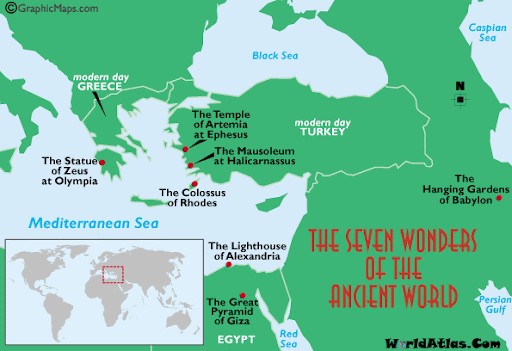

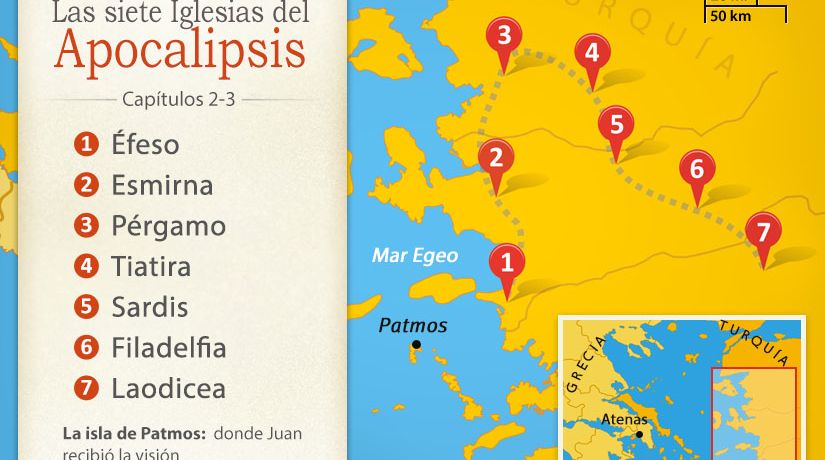
Apocalipsis 1
1. La revelación de Jesucristo, que Dios le dio, para manifestar a sus siervos las cosas que deben suceder pronto; y la declaró enviándola por medio de su ángel a su siervo Juan, (ES OBVIO QUE SI DIOS LE DIO, ES QUE CRISTO NO ES OMNISAPIENTE, NI SIQUIERA EN EL CIELO. OSEA QUE CRISTO NO ES DIOS TODOPODEROSO. "SIERVO JUAN" ESTA EN CLAVE CON REFERENCIA A JUAN MARCOS. RECORDEMOS QUE CRISTO SIEMPRE LO HACE EN EL CONTEXTO AL SALMO 119.)
2. que ha dado testimonio de la palabra de Dios, y del testimonio de Jesucristo, y de todas las cosas que ha visto.
3. Bienaventurado el que lee, y los que oyen las palabras de esta profecía, y guardan las cosas en ella escritas; porque el tiempo está cerca.
4. Juan, a las siete iglesias que están en Asia: Gracia y paz a vosotros,del que es y que era y que ha de venir, y de los siete espíritus que están delante de su trono; (UNA CLARA REFERENCIA A LAS PLEYADES)
5. y de Jesucristo el testigo fiel, el primogénito de los muertos, y el soberano de los reyes de la tierra. Al que nos amó, y nos lavó de nuestros pecados con su sangre,
6. y nos hizo reyes y sacerdotes para Dios, su Padre; a él sea gloria e imperio por los siglos de los siglos. Amén.
7. He aquí que viene con las nubes, y todo ojo le verá, y los que le traspasaron; y todos los linajes de la tierra harán lamentación por él. Sí, amén.
8. Yo soy el Alfa y la Omega, principio y fin, dice el Señor, el que es y que era y que ha de venir, el Todopoderoso. (SALMO 119)
9. Yo Juan, vuestro hermano, y copartícipe vuestro en la tribulación, en el reino y en la paciencia de Jesucristo, estaba en la isla llamada Patmos, por causa de la palabra de Dios y el testimonio de Jesucristo.
10. Yo estaba en el Espíritu en el día del Señor, y oí detrás de mí una gran voz como de trompeta,
11. que decía: Yo soy el Alfa y la Omega, el primero y el último. Escribe en un libro lo que ves, y envíalo a las siete iglesias que están en Asia: a Efeso, Esmirna, Pérgamo, Tiatira, Sardis, Filadelfia y Laodicea. (UNA CLARA REFERENCIA A LAS PLEYADES, OSEA A LA CONSTELACION DEL TORO / TAURO)
ALSION (UBICADA A 33 GRADOS DESDE O DE ARIES)
43. Génesis 33:17: Y Jacob fue a Sucot, y edificó allí CASA para sí, e hizo cabañas para su ganado; por tanto, llamó el nombre de aquel lugar Sucot.
12. Y me volví para ver la voz que hablaba conmigo; y vuelto, vi siete candeleros de oro,
13. y en medio de los siete candeleros, a uno semejante al Hijo del Hombre, vestido de una ropa que llegaba hasta los pies, y ceñido por el pecho con un cinto de oro. (¿CINTURON DE ORION?)
14. Su cabeza y sus cabellos eran blancos como blanca lana, como nieve; sus ojos como llama de fuego;
15. y sus pies semejantes al bronce bruñido, refulgente como en un horno; y su voz como estruendo de muchas aguas.
16. Tenía en su diestra siete estrellas; de su boca salía una espada aguda de dos filos; y su rostro era como el sol cuando resplandece en su fuerza. (LAS SIETE ESTRELLAS SON LAS PLEYADES. ES OBVIO QUE NUESTRO SEÑOR ES ORION. APARENTEMENTE EL SOL EN SU FUERZA ES UNA REFERENCIA AL SOLSTICIO DE VERANO, OSEA AL 20/21 DE JUNIO.)
17. Cuando le vi, caí como muerto a sus pies. Y él puso su diestra sobre mí, diciéndome: No temas; yo soy el primero y el último; (ES CLARO QUE CRISTO HACE REFERENCIA AL SALMO 119, EN EL MARCO A QUE EL ALFA=HOMBRE Y OMEGA=FEMENINO, OSEA AL YIN Y YANG, AL HOMBRE Y LA MUJER, AL SOL Y LA LUNA, EL PRIMERO Y EL ULTIMO, ETC, ETC, OSEA EL CORAZON ESOTERICO DEL 911/ 119)
18. y el que vivo, y estuve muerto; mas he aquí que vivo por los siglos de los siglos, amén. Y tengo las llaves de la muerte y del Hades. (UNA REFERENCIA A MATEO 16:18)
19. Escribe las cosas que has visto, y las que son, y las que han de ser después de estas. (JUSTO EN EL 1:19, UNA REFERENCIA AL PASADO, PRESENTE Y FUTURO OSEA A LA "MAQUINA DEL TIEMPO")
20. El misterio de las siete estrellas que has visto en mi diestra, y de los siete candeleros de oro: las siete estrellas son los ángeles de las siete iglesias, y los siete candeleros que has visto, son las siete iglesias.
Escribe las cosas que has VISTO, y las que son, y las que han de ser después de estas.
pasado, presente y futuro ("MAQUINA DEL TIEMPO")
NO HAY PEOR CIEGO QUE EL QUE NO QUIERE VER
¿USTED QUIERE HACERSE IGUAL A DIOS?
SIGA ENSEÑANDO QUE DIOS ES HOMBRE
|
|
|
|
Réponse |
Message 49 de 58 de ce thème |
|
SARA=SERPIENTE=$=SUNDAY (SOL ES EL GENERADOR DEL CICLO DEL AGUA)
DINOSAURIO
DINO / DINA / DIANA / DAN (TRANSFIGURACION DE CRISTO EN EL MONTE HERMON EN LA TRIBU DE DAN)
SAURIO / SAR (PRINCIPE EN HEBREO)
LA TRANSFIGURACION DE CRISTO EN EL MONTE HERMON, CERCA DE CESAREA DE FILIPO
C-SAR ES LA CLAVE DE LA TRASLACION EN EL TIEMPO
NOTEN EL NEXO DE DAN, CON LA SERPIENTE (VENECIA) Y EL CABALLO (PLAZA SAN MARCOS)

 
Génesis 8:22 Mientras la tierra permanezca, no cesarán la sementera y la siega, el frío y el calor, el verano y el invierno, y el día y la noche. (EL MISMO DISEÑO DEL VATICANO-OCHO PUNTAS-PLAZA DE SAN PEDRO)
DINERO=MUJER=$=SARA
EL PSEUDOCRISTIANISMO LE TIENE PANICO A LA MUJER.
EN VENECIA ESTA EL SECRETO
|
Obviamente que Dios es Dios de vivos..
Puesto que en la fe nadie muere..
Y los patriarcas Abraham, Isaac, Jacob ..
Caminaron por fe..
Dios le cambio el nombre de abram a abraham..
Porque es el primer viviente según el pacto de la circuncisión..
El primer hombre de fe, el padre de naciones..
Y ese pacto de Dios con Abraham sigue vigente hasta hoy..
Porque en la fe de Abraham son salvas todas las naciones..
Y para dejar tranquilo a Barilochense le digo :
Dios también le cambió el nombre a la mujer de Abraham..
De Saraí ( princesa ) pasó a llamarse Sara que significa madre de naciones..
16. Y la bendeciré, y también te daré de ella hijo; sí, la bendeciré, y vendrá a ser madre de naciones; reyes de pueblos vendrán de ella.
Para que no diga que Dios no ama a sus hijas..
Saludos
El Ungido
LA CLAVE DEL EXPERIMENTO FILADELFIA
EN VENECIA ESTA EL SECRETO
RAMERA=$ =SERPIENTE= SABADO= SABIDURIA= LETRA S= SOPHIA=SNAKE =SERPENT
S=SERPIENTE
68. Juan 4:10 Respondió Jesús y le dijo: Si conocieras el don de Dios, y quién es el que te dice: Dame de beber; tú le pedirías, y él te daría agua VIVA.
69. Juan 4:11 La mujer le dijo: Señor, no tienes con qué sacarla, y el pozo es hondo. ¿De dónde, pues, tienes el agua VIVA?
70. Juan 7:38 El que cree en mí, como dice la Escritura, de su interior correrán ríos de agua VIVA.
|
|
|
 Primer Primer  Anterior 2 a 3 de 3 Siguiente Anterior 2 a 3 de 3 Siguiente  Último Último  |
|
|
|
|
Réponse |
Message 50 de 58 de ce thème |
|
22/7=3.14=PI
12 PUNTOS EN SU CIRCUNFERENCIA=RELOJ=SANTA CENA
LONGITUD CIRCUNFERENCIA=PIxDIAMETRO
 |
|
|
|
|
|
|
Réponse |
Message 51 de 58 de ce thème |
|
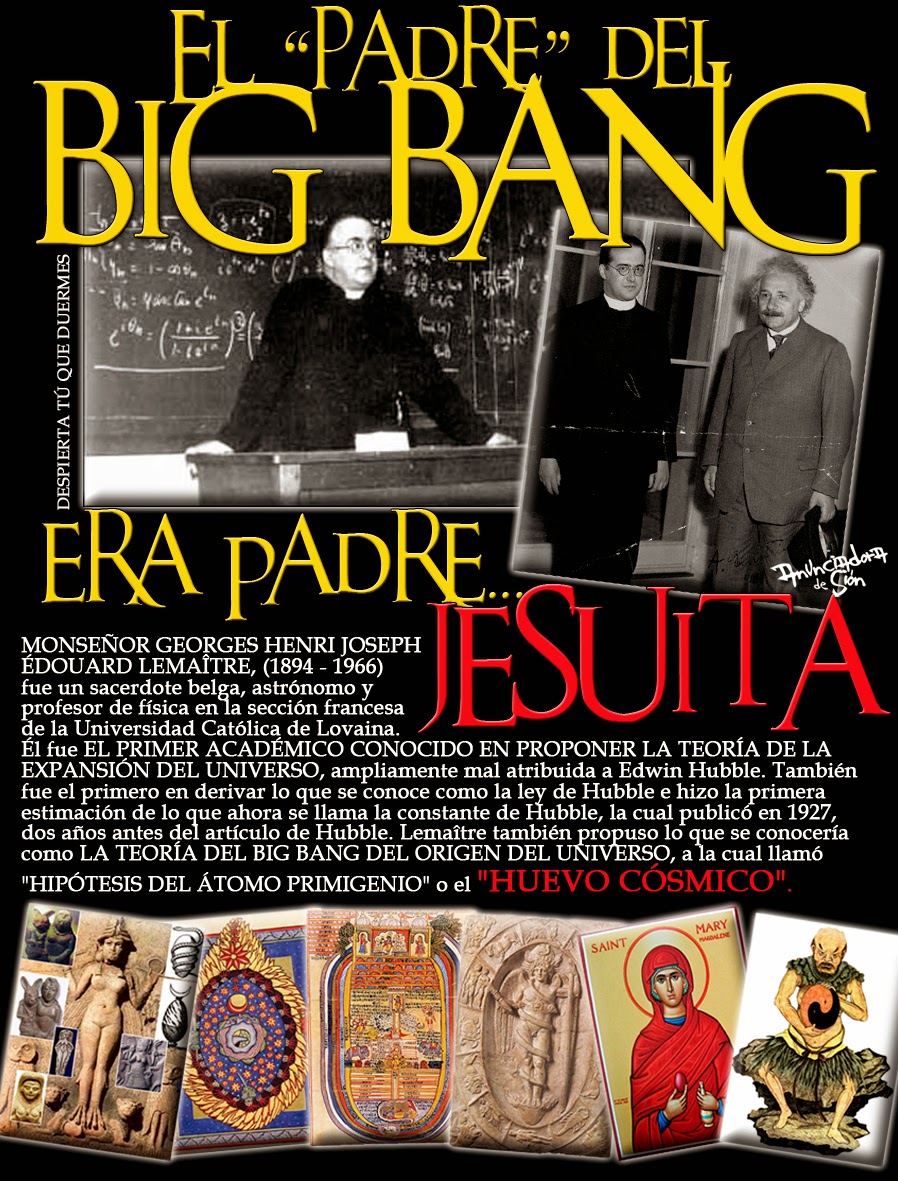 

11 DE SEPTIEMBRE O SEPTIEMBRE 11
11/9 O 9/11
Sapientia Aedificavit Sibi Domum. Es decir, "la sabiduría ha edificado aquí su casa". Resulta curioso que la misma frase aparece en el Evangelio de María Magdalena, un texto apócrifo. Se dice que en el interior de esta iglesia y de otras muchas de Venecia está escondido el tesoro de los templarios. Pero no hay ninguna prueba de ello. Para terminar ya con esta entrada me gustaría que nos acercásemos un momento a uno de los edificios más emblemáticos de Venecia: el Palacio Ducal.

La Maddalena

La Maddalena

Tomb of Tommaso Temanza

ISLA SAN GIORGIO (VENECIA)=GEORGE LEMAITRE
GEMATRIA EN INGLES DE SEED=33
GEMATRIA EN INGLES DE GATE=33
SARA (CE-SAREA DE FILIPO)=PARALELO 33
"¡Oh profundidad de las riquezas de la sabiduría (sophia)
y de la ciencia (gnwsiV, gnosis) de Dios!
¡Cuán incomprensibles son sus juicios, e inescrutables sus caminos!"
(Romanos, 11: 33).
 the Apple
| milky way in Simple Gematria Equals: 119 |
( |
m 13 |
i9 |
l 12 |
k 11 |
y 25 |
0 |
w 23 |
a1 |
y 25 |
) |
| queen mary in Simple Gematria Equals: 119 |
( |
q 17 |
u 21 |
e5 |
e5 |
n 14 |
0 |
m 13 |
a1 |
r 18 |
y 25 |
|
| hebrew calendar in Simple Gematria Equals: 119 |
( |
h8 |
e5 |
b2 |
r 18 |
e5 |
w 23 |
0 |
c3 |
a1 |
l 12 |
e5 |
n 14 |
d4 |
a1 |
r 18 |
| mary magdalene in Simple Gematria Equals: 119 |
( |
m 13 |
a1 |
r 18 |
y 25 |
0 |
m 13 |
a1 |
g7 |
d4 |
a1 |
l 12 |
e5 |
n 14 |
e5 |
|

|
|
|
|
Réponse |
Message 52 de 58 de ce thème |
|
  
Hércules (constelación)
De Wikipedia, la enciclopedia libre
Recibe su nombre del héroe mitológico, Hércules y es la quinta en tamaño de las 88 constelaciones modernas. También era una de las 48 constelaciones de Ptolomeo.
[editar] Características destacables
No tiene estrellas de primera magnitud, siendo la más brillante β Herculis con magnitud 2,78. μ Herculis se encuentra a 27,4 años luz de la Tierra. El Ápex solar (punto del cielo que indica la dirección hacia la que se mueve el Sol en su órbitaalrededor del centro de la galaxia) se encuentra en Hércules, cerca de ξ Herculis.
[editar] Estrellas principales
- α Herculis (Ras Algethi o Rasalgethi), de magnitud 3,31, es un sistema estelar triple, cuya estrella principal es una gigante roja variable.
- β Herculis (Kornephoros), la más brillante de la constelación con magnitud 2,78, una estrella gigante amarilla.
- γ Herculis, gigante blanca de magnitud 3,74. Es una binaria espectroscópica con un período orbital de 11,9 días.
- δ Herculis (Sarin), estrella blanca de magnitud 3,12; es una estrella binaria cuyas componentes han sido resueltas por interferometría.
- ε Herculis, binaria espectroscópica de magnitud 3,91.
- ζ Herculis, la segunda más brillante de la constelación con magnitud 2,89, estrella doble formada por dos estrellas amarillas de desigual brillo.
- η Herculis, gigante amarilla de magnitud 3,49.
- θ Herculis, gigante luminosa naranja de magnitud 3,85.
- ι Herculis, subgigante azul de magnitud 3,79; tres estrellas más completan este sistema estelar cuádruple.
- κ Herculis A y κ Herculis B, dos gigantes que forman una doble óptica.
- λ Herculis (Maasym), gigante naranja de magnitud 4,40.
- μ Herculis, sistema estelar cercano que dista del Sistema Solar 27,4 años luz.
- π Herculis, gigante naranja de magnitud 3,16.
- ρ Herculis, estrella doble cuyas componentes, separadas 4 segundos de arco, brillan con magnitud 4,56 y 5,42.
- τ Herculis, estrella B pulsante lenta (SPB) con una tenue compañera a 7,6 segundos de arco.
- χ Herculis, enana amarilla de baja metalicidad que se encuentra a 52 años luz de distancia.
- ω Herculis (Kajam), de magnitud 4,57.
- 8 Herculis, estrella blanca de magnitud 6,13 que forma una doble óptica con Kappa Herculis —separación 0,2º—.
- 14 Herculis, enana naranja a 59,2 años luz con una enana marrón o planeta gigante alrededor. En 2006 se descubrió un posible segundo compañero, aún sin confirmar.
- 30 Herculis (g Herculis), gigante roja y variable semirregular cuyo brillo oscila entre magnitud 4,3 y 6,3 en un ciclo de 89,2 días.
- 68 Herculis (u Herculis), binaria eclipsante en donde existe transferencia de masa desde la secundaria hacia la primaria.
- 72 Herculis (w Herculis), enana amarilla similar al Sol a 47 años luz de distancia.
- 89 Herculis, supergigante amarilla en las etapas finales de su evolución estelar.
- 95 Herculis, estrella binaria compuesta por una gigante blanca y una gigante amarilla separadas 6,3 segundos de arco.
- 99 Herculis, binaria de baja metalicidad cuya primaria es una enana amarilla de magnitud 5,20.
- 101 Herculis, gigante blanca de magnitud 5,11.
- 109 Herculis, gigante naranja de magnitud 3,84, la duodécima estrella más brillante de la constelación.
- 111 Herculis, estrella blanca de magnitud 4,35.
- X Herculis, variable pulsante semirregular cuyo brillo varía entre magnitud 6 y 7 en un período de 95 días.
- SZ Herculis y FN Herculis, binarias eclipsantes de magnitud 9,94 y 11,08 respectivamente.
- UX Herculis, binaria eclipsante de magnitud 9,05; durante el eclipse principal su brillo disminuye 1,16 magnitudes.
- OP Herculis, gigante luminosa roja variable entre magnitud 5,85 y 6,73.
- HD 147506, subgigante amarilla en donde se ha detectado un planeta masivo (HAT-P-2b) en una órbita excéntricacercana a la estrella.
- HD 149026, estrella subgigante con un planeta cuya masa es similar a la de Saturno.
- HD 154345, enana amarilla a 58,91 años luz con un planeta extrasolar.
- Gliese 623, estrella binaria compuesta por dos enanas rojas.
- Gliese 686 y Gliese 649, enanas rojas a 26,5 y 33,7 años luz respectivamente; la segunda de ellas posee un planeta.
- HD 155358, estrella de baja metalicidad con dos planetas que interactúan gravitacionalmente.
- Gliese 638 y HR 6806, enanas naranjas situadas respectivamente a 31,9 y 36,2 años luz de distancia de la Tierra.
- GD 362, enana blanca con un anillo similar a los de Saturno.
- http://es.wikipedia.org/wiki/H%C3%A9rcules_(constelaci%C3%B3n)
  
ISLA SAN GIORGIO (VENECIA)=GEORGE LEMAITRE
GEMATRIA EN INGLES DE SEED=33
GEMATRIA EN INGLES DE GATE=33
SARA (CE-SAREA DE FILIPO)=PARALELO 33
"¡Oh profundidad de las riquezas de la sabiduría (sophia)
y de la ciencia (gnwsiV, gnosis) de Dios!
¡Cuán incomprensibles son sus juicios, e inescrutables sus caminos!"
(Romanos, 11: 33).
25 DE ABRIL=DIA DE SAN MARCOS
22 DE JULIO=DIA DE MARIA LA MAGDALENA
|
|
|
|
Réponse |
Message 53 de 58 de ce thème |
|
 
  
Hércules (constelación)
De Wikipedia, la enciclopedia libre
Recibe su nombre del héroe mitológico, Hércules y es la quinta en tamaño de las 88 constelaciones modernas. También era una de las 48 constelaciones de Ptolomeo.
[editar] Características destacables
No tiene estrellas de primera magnitud, siendo la más brillante β Herculis con magnitud 2,78. μ Herculis se encuentra a 27,4 años luz de la Tierra. El Ápex solar (punto del cielo que indica la dirección hacia la que se mueve el Sol en su órbitaalrededor del centro de la galaxia) se encuentra en Hércules, cerca de ξ Herculis.
[editar] Estrellas principales
- α Herculis (Ras Algethi o Rasalgethi), de magnitud 3,31, es un sistema estelar triple, cuya estrella principal es una gigante roja variable.
- β Herculis (Kornephoros), la más brillante de la constelación con magnitud 2,78, una estrella gigante amarilla.
- γ Herculis, gigante blanca de magnitud 3,74. Es una binaria espectroscópica con un período orbital de 11,9 días.
- δ Herculis (Sarin), estrella blanca de magnitud 3,12; es una estrella binaria cuyas componentes han sido resueltas por interferometría.
- ε Herculis, binaria espectroscópica de magnitud 3,91.
- ζ Herculis, la segunda más brillante de la constelación con magnitud 2,89, estrella doble formada por dos estrellas amarillas de desigual brillo.
- η Herculis, gigante amarilla de magnitud 3,49.
- θ Herculis, gigante luminosa naranja de magnitud 3,85.
- ι Herculis, subgigante azul de magnitud 3,79; tres estrellas más completan este sistema estelar cuádruple.
- κ Herculis A y κ Herculis B, dos gigantes que forman una doble óptica.
- λ Herculis (Maasym), gigante naranja de magnitud 4,40.
- μ Herculis, sistema estelar cercano que dista del Sistema Solar 27,4 años luz.
- π Herculis, gigante naranja de magnitud 3,16.
- ρ Herculis, estrella doble cuyas componentes, separadas 4 segundos de arco, brillan con magnitud 4,56 y 5,42.
- τ Herculis, estrella B pulsante lenta (SPB) con una tenue compañera a 7,6 segundos de arco.
- χ Herculis, enana amarilla de baja metalicidad que se encuentra a 52 años luz de distancia.
- ω Herculis (Kajam), de magnitud 4,57.
- 8 Herculis, estrella blanca de magnitud 6,13 que forma una doble óptica con Kappa Herculis —separación 0,2º—.
- 14 Herculis, enana naranja a 59,2 años luz con una enana marrón o planeta gigante alrededor. En 2006 se descubrió un posible segundo compañero, aún sin confirmar.
- 30 Herculis (g Herculis), gigante roja y variable semirregular cuyo brillo oscila entre magnitud 4,3 y 6,3 en un ciclo de 89,2 días.
- 68 Herculis (u Herculis), binaria eclipsante en donde existe transferencia de masa desde la secundaria hacia la primaria.
- 72 Herculis (w Herculis), enana amarilla similar al Sol a 47 años luz de distancia.
  
ISLA SAN GIORGIO (VENECIA)=GEORGE LEMAITRE
GEMATRIA EN INGLES DE SEED=33
GEMATRIA EN INGLES DE GATE=33
SARA (CE-SAREA DE FILIPO)=PARALELO 33
"¡Oh profundidad de las riquezas de la sabiduría (sophia)
y de la ciencia (gnwsiV, gnosis) de Dios!
¡Cuán incomprensibles son sus juicios, e inescrutables sus caminos!"
(Romanos, 11: 33).
25 DE ABRIL=DIA DE SAN MARCOS
22 DE JULIO=DIA DE MARIA LA MAGDALENA
|
|
|
|
Réponse |
Message 54 de 58 de ce thème |
|
|
Posted on Apr 28, 2019

On March 19, 2109 The Galaxy reported that China was close to launching its “artificial sun” promising a future of ‘limitless clean energy –a Chinese “Green New Deal”. Unlike nuclear fission, fusion emits no greenhouse gases and carries less risk of accidents or the theft of atomic material.
The current Experimental Advanced Superconducting Tokamak (EAST) reactor in Hefei has created temperatures as hot as the interior of the sun. In November, it became the first facility in the world to generate 100 million degrees Celsius (212 million Fahrenheit)—six times as hot as the sun’s core. These mind-boggling temperatures are crucial to achieving sustainable nuclear fusion reactions, which promise an inexhaustible energy source.
“Stupendous” –China’s Leap to Space-Based Solar Power: ‘Will Beam Sun’s Energy Back to Earth’
“The artificial sun’s plasma is mainly composed of electrons and ions and the country’s existing Tokamak devices have achieved an electron temperature of over 100 million degrees C in its core plasma, and an ion temperature of 50 million C, and it is the ion that generates energy in the device,” said Dr Duan Xuru, an official at the China National Nuclear Corporation, according to China’s Global Times.
HL-2M Tokamak is expected to increase the electricity intensity from one mega amperes to three mega amperes, an important step to achieve nuclear fusion, a spokesperson surnamed Liu with the press office of the Southwestern Institute of Physics (SWIP), affiliated with China National Nuclear Corporation, told the Global Times.
“The Milky Way Base” –China Names First Human-Technology Landing Site on Moon’s Far Side
For instance, the deuterium (also known as heavy hydrogen) extracted from one liter of seawater releases the energy equivalent of burning 300 liters of gasoline in a complete fusion reaction, Liu said.
The “artificial sun” aims to release nuclear fusion in the same way as the sun by using deuterium and tritium (radioactive hydrogen-3), and finally generate electricity. It is clean energy that will not generate waste, which makes it ideal for people to use in the future, Liu said.
https://dailygalaxy.com/2019/04/earths-second-sun-chinas-fusion-future-the-holy-grail-of-unlimited-energy-weekend-feature/
|
|
|
 Primer Primer  Anterior 2 a 4 de 4 Siguiente Anterior 2 a 4 de 4 Siguiente  Último Último  |
|
|
|
V  |
|
|
SECRETO MASONICO DETRAS DE LA "AGUJA DE CLEOPATRA" (EL MARCO/PUERTA/GATE TAMBIEN ES UN PORTAL ESPACIO/TIEMPO)
|
|
|
|
|
|
|
Réponse |
Message 55 de 58 de ce thème |
|
Ever since major industrialized nations learned how to fuse atoms in megabombs able to blast scores of square miles to smithereens, the quest has been on to harness the vast potential energy store that is nuclear fusion as a viable means to peacefully fuel modern civilization.
Unlike fission, which involves the splitting of atomic nuclei, fusion both produces more energy while generating no radio-active waste. The primary fuel — H2 — is abundant and non-radioactive. Because conventional fusion reactors involve containment fields that force these non-radioactive elements together, they do not operate under dangerous conditions similar to nuclear fission reactors. The fusion reaction bi-products are also common, non-polluting elements together with a heat source used for mechanical work.
Fusion reactors aren’t vulnerable to the same kinds of terrible melt-downs seen at Fukushima and Chernobyl. And the energy density of the fusion reaction itself is extraordinary, producing a potential for very high energy returns on energy invested.
A world where an energy source of this quality is compact, economic, and widely available, is one within reach of a progression of advances and wonders. A human civilization with a growing capability to solve emerging problems involving a number of difficult limits.
The Quest for Viable Hot Fusion
As such, viable fusion is seen as a kind of holy grail energy source. And ever since the 1950s, engineers have been pursuing technical and cost effective means to harness it. For part of the problem in harnessing fusion was the highly energetic nature of the energy source itself.
To contain massive, hot, fusion reactions, magnetic plasma bottles were needed. Doughnut-shaped containment fields engineered to trap substances as hot as a sun. And the magnetic bottles themselves were energy-hungry beasts requiring major investment in infrastructure and materials.
The reactor facilities necessary to produce such high-energy bottles were massive, involving megawatts of energy for the magnetic fields that would contain the super-hot fusion reaction and its resultant plasmas. Such tokamak fields were very expensive to erect and maintain.

(Tokamak fusion reaction containment field. Image source: Commons.)
In most cases, more energy was needed to keep the fusion reaction in check than could be gleaned from the reaction overall. But slow and steady advances continued — primarily aimed at building a large enough containment vessel to glean a useful return on the energy dumped into the tokamak fields.
As the massive tokamak projects entered the 21st Century, a coalition of countries including the EU, the US, Russia and China, pooled efforts to construct the 23,000 ton ITER project. At a cost of $50 billion dollars US and growing, the project aims to provide a 10 to 1 energy return on energy invested by converting 50 megawatts of containment field energy into 500 megawatts of commercial energy. Such provision of a viable fusion energy store would, indeed, be a breakthrough and likely result in spin-off reactor technology if such offerings could be reproduced at relatively low-cost.
ITER plans to begin testing in 2020 and hopes to be online and producing energy by 2027.
It is worth noting, though, that the massive size and cost of projects like ITER serve to limit the likelihood that fusion energy will become commercially viable on any time horizon sooner than 20 years even if the energy production efforts are successful (although, one can well compare the 50 billion over decades cost of ITER with the $650 billion or greater annual cost of current ongoing oil and gas exploration).
Unexplained Experimental Results
For much of the mainstream scientific community, the large fusion plasma containment field projects like ITER serve as the only hope for a viable fusion energy source. But ever since the late 1980s, an underground science has developed around what was, at first, called cold fusion.
This fringe field emerged onto the world stage as an off-spring of work conducted and announced by Pons and Fleischmann in 1989. The two scientists provided reports observing a positive energy fusion reaction of deuterium occurring at low temperature in the presence of a relatively low-energy electrical current and a catalyst (palladium).
It was also a continuation of previous work by Graham, Paneth, Peters, and Tandberg during the 19th and early 20th Centuries. Most notably, Tandberg stated in 1927 that he had fused hydrogen into helium in an electrolytic cell with palladium electrodes. Ironically, this work was mostly unknown to Pons and Fleischmann at the time of their announcement.
Pons and Fleischmann’s paper rocked the scientific community — triggering an article about the researchers in Time Magazine and Congressional inquiries together with speculation that a dawn of a new energy era was at hand. Much of this speculation was fueled by the researchers, who provided extraordinary claims about the usefulness of the energy source they discovered.
But the Pons and Fleischmann experiment was a sketchy subject for observational proofs. For like Tandberg, who had a patent based on his experiment rejected on the notion that ‘he could not explain the physical process,’ Pons and Fleischmann found resistance due to the fact that their observations would upend most of what was currently understood about atomic physics — chiefly that it should take a massive amount of energy to fuse atomic particles.
Even more bedeviling, the experiment was difficult to reproduce. Sometimes, the positive heat energy reaction that Pons and Fleischmann reported was observed and sometimes it was not. This inconsistency continued to fuel doubt in the validity of this line of research.
Even worse, there was very little in the way of sound scientific theory that could explain what was actually going on inside the reaction chamber to produce the observed heat. Conventional atomic science couldn’t produce a mechanism for such a reaction. And so the observations hinged on convincing the gate keepers of conventional science that a loop-hole existed in atomic fusion theory. A rather high bar to cross.
Since no current accepted and peer-reviewed theory could explain the cold fusion reaction to make it viable, this lead to researchers in the field fighting off the label of ‘scientific pariah.’
Nonetheless, work continued on so-called cold fusion (now often labeled low energy nuclear reactions or LENR) at a number of government and commercial laboratories around the world. Japan, Italy, France, Israel, and the US all continued to conduct validation and observation experiments related to Pons and Fleischmann’s efforts. And a variety of commercial efforts also emerged — with some producing rather extraordinary but, as yet, still disputed claims.
Last year, a team of scientists produced an observational study of a controversial generator called the E-Cat which claimed to use LENR technology to produce excess energy. The study validated the claim, but, as with most LENR work, has received broad criticism. A second potential paper, produced by the same authors, was listed on a blog earlier this month. The draft has yet to appear in any of the major scientific libraries.
Lockheed Martin’s Compact Fusion
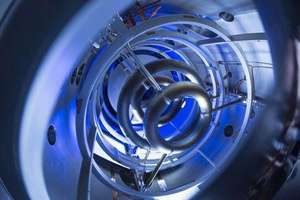
(Lockheed Martin working on experimental fusion design. Image source: Lockheed Martin.)
Until recently, commercial agencies working to develop fusion as a viable energy technology have split into two camps — the large corporations which have chiefly funded experimental efforts, and the small corporations like Rossi Energy which have been promising, but failing to deliver, viable LENR generators for the past few years.
Now, as of last week, Lockheed Martin has entered the fray by making an announcement that it aims to produce a commercially viable small fusion reactor within the next ten years.
Spear-headed by Skunk Works — the same group that produced the first stealth bomber and a number of other breakthrough technologies — the effort aims to have an experimental reactor off the ground within 5 years, military capable technology for ships, vehicles and aircraft within 10 years, and non-government/military reactors within less than 20 years.
The Lockheed Martin reactors are planned to be compact — small enough to fit in an 18 wheeler truck bed. These compact designs would produce a relatively large amount of energy — about 100 MW. Such a design could power a moderate sized city, allow an aircraft to fly indefinitely, be used to power larger vehicles, and serve as an energy source for ocean-going vessels. Such a small design would be less costly, more useful, and more easy to rapidly test, develop, and deploy.

(Lockheed Martin’s fusion reactor desing uses a layered plasma containment approach. Image source: Cosmos. Image credit: Anton Banulski.)
The key to Lockheed Martin’s smaller design is the creative use of older containment technologies. According to reports from lead Lockheed Martin scientists, the Skunk Works team is using a technique that involves a cusp confinement method — which uses ring-shaped electromagnets to contain the fusion plasma. The electromagnets generate a field that bulges in the middle. Magnetism pushes the fusion particles together. The further away from the fusion medium the particles stray, the greater the magnetic force pushing them back in.
In the 1970s, cusp confinement was found to be too leaky to produce a fusion reaction. Martin’s solution is to surround the cusp field with a second magnetic mirroring field — also a somewhat leaky field. However, another innovation by Lockheed Martin is to shunt escaped particles back into containment using a third field layer.
According to the, now anecdotal, reports from the initial research team, the experimental design features a viable fusion containment field using only 1 kilowatt of power. A claim that, if it bears out, could put this new design onto the cutting edge for fusion development, but would require quite a bit more testing to reach full power loads.
From a recent article in Cosmos:
McGuire said he and five to 10 researchers have been working for four years and have built their first experimental device. They carried out 200 test shots while commissioning it. He declined to say what temperature, density or confinement time they had achieved but he said the plasma appeared stable and they had heated it with up to one kilowatt of power.
A Big Corp to Take on the Fossil Fuel Giants?
As of yet, the Lockheed Martin announcement provides no scientific proofs (Lockheed says it has a scientific paper pending). And given the history of past fusion innovation claims, this prestigious company may well be taking a substantial risk in its early and apparently confident announcement. Some publications have already pointed out that LM is putting its reputation on the line.
That said, perhaps the entry of the prestigious Lockheed Martin corporation into the fast track for attempting to provide viable fusion technologies is a sign that some of these energy sources — whether Tokamak or LENR based — are on the verge of a period of breakthrough.
If so, what I wrote last year about fusion energy in Growth Shock may well apply:
Even if the first high hurdle of commercial viability is crossed, whatever industries provide fusion systems will have to survive competition with the wealthy, influential, and politically powerful fossil fuel industry. One can expect a similar campaign of disinformation, undermining, delaying and detracting that has been waged against the world’s solar, wind and biofuel industries. Misinformation and fear mongering are most likely to arise as soon as any announcement of commercial viability goes widely public. This second hurdle may well prove to be even higher than the first and oil, coal, gas and, possibly, traditional nuclear special interest groups may well join to keep this option in its bottle.
Before becoming overly optimistic, we must remember that both wind and solar energy showed great promise early on and have taken many decades fighting both real world limitations and entrenched special interests to gain the minor foothold they have now established. And these are both proven technologies that are in a vicious competition with the established smoke-stack interests. One would not expect much difference with fusion. If viable, it poses a greater threat than any current renewable energy system, so the opposition media campaign, in the event of publicly proven viability, would likely be shrill in the extreme.
But fusion technology may have a few strikes in its favor. Though it may well be disruptive to traditional fuel suppliers, it may not be as disruptive as current alternatives to traditional utilities. Most of the applications that the new fusion producers are attempting to license would be plug and play… fusion generators could directly replace those in coal, gas, and nuclear plants. The new infrastructure, essentially, is limited to a reaction chamber or boiler. And should fusion prove viable, this ‘plug and play’ aspect of the technology may prove to be a crucial advantage.
The compact nature of Lockheed’s prospective offering — 100 MW scale truck-sized reactors — should they emerge, could well be a critical fossil fuel replacement desperately needed in an age of ramping anthropogenic climate change. So let’s hope this is not a miss-fire on Lockheed’s part.
Links:
Compact Fusion
Is Lockheed’s Fusion Project Breaking New Ground?
Lockheed Developing Truck-Sized Nuclear Fusion Reactor
Growth Shock
Could Ultra-Cheap Energy be Just Around the Corner?
Tokamak
ITER
Cold Fusion
https://robertscribbler.com/tag/lockheed-martin/ |
|
|
|
Réponse |
Message 56 de 58 de ce thème |
|
|
|
|
Réponse |
Message 57 de 58 de ce thème |
|
Bigfoot's message was so urgent Earth had to shake violently on April 6, 2009 in Bigfoot/boot Land, Italy...
 

April 6 Italy hunts for quake survivors
..from December 14-16, 2008 with love. (See 'Whisper of the Fifth Sun' for more on this predicted quake.)
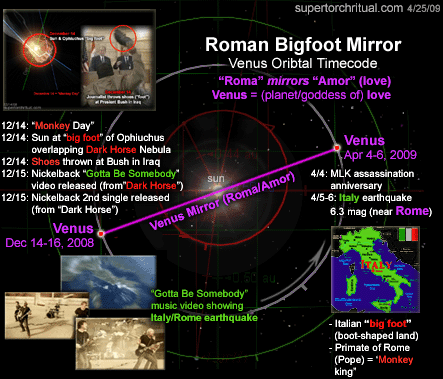
Bigfoot, giant foot, giants... Genesis 6, the Nephilim, heaven-earth interbreeding, i.e. human genetic manipulation ('guided evolution'):
Book of Genesis chapter 6: And it came to pass, when men began to multiply on the face of the earth, and daughters were born unto them, That the sons of God saw the daughters of men that they were fair; and they took them wives of all which they chose. [...] There were giants [Nephilim] in the earth in those days; and also after that, when the sons of God came in unto the daughters of men, and they bare children to them, the same became mighty men which were of old, men of renown. And God saw that the wickedness of man was great in the earth, and that every imagination of the thoughts of his heart was only evil continually. And it repented the LORD that he had made man on the earth, and it grieved him at his heart. And the LORD said, I will destroy man whom I have created from the face of the earth; both man, and beast, and the creeping thing, and the fowls of the air; for it repenteth me that I have made them. But Noah found grace in the eyes of the LORD. A monstrous Sin deemed irreversible, Earth had to be cleansed by a Great Flood.
Sin is the name of a Sumerian (and Minaean) god of the Moon...
Still standing after the Flood as 'Noah'.

A forbidden 'lunar strain' of mankind...
A 'Diana bloodline'.
* * *
Diana = Bigfoot = Nephilim = Noah

Argentina is both a moon...
...and a Bigfoot:
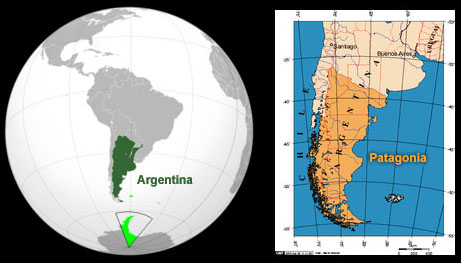
...making headlines the day before Michael Jackson's death:

Jun 24 Gov. Sanford admits to extramarital affair
with Argentine woman
For all intents and purposes a missing person from June 18 until 24 (i.e. around Prince William's birthday), Governor Sanford spent five days 'crying in Argentina' with 'Maria'...
Maria = Mary = Madonna

Madonna singing 'Don't Cry For Me Argentina'
...in 'Evita' (1996), playing Maria Eva Duarte de Peron, First Lady of Argentina from 1946 to 1952, a Diana-like beloved female figure who died young at the age of 33 (Diana was 36 when she died).
Maria/Mary = Marianne
 
She is essentially Lady Liberty standing gracefully with her torch in New York and Paris very near where Princess Diana was killed marked by a torch.
She is interchangeable with Columbia - the feminine personification of the United States. It was in the South Carolina state capital Columbia that Gov. Sanford revealed his Argentine affair... echoed by a train collision in the District of Columbia (Washington DC) on June 22:

June 22 DC Metro subway trains collide - 9 dead, 80 injured
Timeline:
June 18-24: Gov. Sanford missing/crying in Argentina
June 21: 'Impact' Part 1 on ABC; Prince William birthday
June 22: DC Metro Red Line trains in collision
June 23: US Moon probes (LRO/LCROSS) reach Moon
June 24: Gov. Sanford reveals Argentine affair
June 25: Death of Michael Jackson & Farahh Fawcett
'Metro' means 'meter' in Spanish, Italian, Portuguese, etc. The meter is historically defined as 1/10,000,000 of the distance between the North Pole and the equator through Paris, or in other words the Paris Meridian between the North Pole and the equator. The Paris Meridian is also the 'Rose Line' (an esoteric concept popularized by The Da Vinci Code) i.e. a 'Red Line'...

DC Metro Red Line = French/Columbian Rose Line
...traditionally implying the Blood Royal/Sangraal or the Marian/Columbian Bloodline of the Holy Grail.
In Bloodline of the Holy Grail Laurence Gardner writes of the House of Stuart, the royal bloodline to which Princess Diana and her children belong (pp. 344-5):
The senior Stewart descent goes all the way back to King Arthur's father, King Aedan of Scots, on the one hand and to Prince Nascien of the Septimanian Midi on the other. The Scots descent traces further back through King Lucius of Siluria to Bran the Blessed and Joseph of Arimathea (St James the Just), while the Midi succession stems from the Merovingians' male ancestral line through the Fisher Kings to Jesus and Mary Magdalene. Conjoining the lines from their 1st-century points of departure, the descent is in the succession of the Royal House of Judah. This is a truly unique line of sovereign lineage from King David in one of the key descents which comprise the Bloodline of the Holy Grail.
Nephilim/Bigfoot bloodline = Moon/Diana bloodline = Rose Line = Bloodline of the Holy Grail = Stuart Bloodline (?) = Princess Diana bloodline...
Was Princess Diana a product of a particularly special strain of the Grail bloodline and the Stuart bloodline? Perhaps (argued for instance in Princess Diana: The Hidden Evidence). But that's speculative and should be treated as a storyline rather than fact. It may well be that the name 'Diana' was all it took to make her 'special' in the esoteric context of Grail symbolism.
https://www.goroadachi.com/etemenanki/moonwalker.htm |
|
|
|
Réponse |
Message 58 de 58 de ce thème |
|
The Tesla Coil Through Time
How it came to be and why.
Nikola Tesla was a unicorn person before “unicorn person” became a term.
He was a Serbian inventor who came up with the idea of wireless energy transfer among things like alternating current, induction motors and many others.
I would say that he built out his idea of global wireless energy transfer in three phases. The very first was the Tesla Coil, which I made a video about. You can check it out below.
The second phase of his scaling plan was when he built the Magnifying Transmitter. He built this at his laboratory in Colorado Springs.
This was essentially a larger version of the Tesla Coil. Using it as an analogy, the first tower represents the primary coil, and the second tower represents the secondary coil.
Finally, the third phase of his scaling was to take it global. He planned and built out the Wardenclyffe Tower in New York.
However, this version failed and was eventually taken down in 1917, but we’re getting ahead of ourselves. Let’s take a look at what needed to happen before Tesla came up with his very first demonstration; the Tesla Coil.
Historical Beginnings
To explain Tesla’s journey towards global wireless energy transfer, there are a few key points in history and inventions that we need to go over first.
The first key invention is that of the battery in the 1780s. Two physicists, Galvani and Volta, conducted an experiment. I talk about the entire process in my article about the physics behind wireless energy transfer. I’ve linked it below.
Following the battery, a Danish physicist named Hans Christian Ørsted learned that a moving electric current creates a magnetic field. His discovery was the first to find the link between electricity and magnetism. He demonstrated this in a lecture in 1820.
Perhaps the most important invention hereafter for the Tesla Coil is the electromagnet. In 1826, William Sturgeon, an English physicist, discovered that electric current running through a wire coiled around an iron bar caused the iron bar to behave like a magnet.
He fittingly named this the electromagnet.
A few years later in 1831, a man named Michael Faraday wondered if he could make electricity with magnets. So, he used electromagnets. Faraday is most well known for discovering electromagnetic induction.
He used two separate coils wrapped around one iron ring and noticed that when he attached/disconnected a battery to the first wire, the second wire would get a jolt of electricity. He called this inducing a current.
This phenomenon is explained using Faraday’s Law of Induction, which states that:
a changing magnetic field will induce an electromotive force (EMF) in a loop of wire, where EMF is what causes electrons to move and form a current
At this point, all of the components necessary to conceive of the Tesla Coil had been invented, but the background doesn’t end here.
What Was Innovated?
Following Faraday’s discovery of induction, Nicholas Callan, an Irish priest, wanted to improve Faraday’s device.
He decided to wind both the primary and secondary coils around the same iron bar while keeping them electrically separate. Doing this allowed him to feel electrical jolts from wire that had not been directly connected to a battery!
He also found that if the primary wire, the one connected to the battery, was thick and that the secondary wire was thin and had been coiled more, the jolt produced was more powerful.
If the secondary coil has fewer loops than the primary coil, the result is more current and less voltage. However, Callan’s made a secondary coil with more loops than the primary coil, so the result was more voltage and less current.
Callan’s device was named the Step-Up Transformer. When he connected the battery to a coil, it became an electromagnet with a magnetic field. When he disconnected the battery, it lost its magnetic field.
Using Faraday’s Law, every time Callan connected or disconnected, he created a new current in the second coil of wire. He also used a wheel to mechanically connect and disconnect the battery, acting as a kind of “repeater.”
Though this version was later improved by William Sturgeon, Callan’s device was used for electroshock therapy for many years.
The biggest advancement thereafter was using the coil itself to disconnect and connect to the battery instead of using the wheel. How did this work?
Well, the current running through the primary coil caused it to behave like a bar magnet. The wire carrying the current was then connected to a switch so that it could pull on it and activate a spring in the circuit.
The movement of the spring would turn off the current. However, once the connection was removed, the primary coil would no longer be magnetic. This causes the spring to disconnect, and the switch to turn back on.
An Electrical Interrupter
This process of the switch turning on and off would click about 20 to 40 times per second and was named an electrical interrupter.
There was still room for innovation.
The electrical interrupter would sometimes spark. So, in 1853 a man named Armand Fizau created the Leyden Jar to absorb the spark. It was the first version of a capacitor.
This is something made of two large conducting materials separated by insulating material.
By adding the capacitor and getting rid of the spark, Fizau created a new device — one that took DC from a battery and made bursts of AC in the 1850s.
Though not necessary to understanding the Tesla Coil, I’ll mention too that in 1886, Heinrich Hertz added an antenna to the induction coil and created the first man-made radio wave.
This is where Tesla comes in.
Tesla’s Take
Having heard of the radio waves created by Hertz, Tesla visited the World Fair in Paris, 1889. He began tinkering with the induction coil. Among other things, he removed the interrupter and DC battery and replaced it with an AC generator.
This makes sense — why use a battery and mechanical switch to turn the current on and off when a generator that automatically switches the current’s direction could be used instead?
Though this first adaptation didn’t actually work out at the end (due to overheating and melting of wire insulation) it did lead to Tesla’s use of a spark or air gap.
With a few other tweaks, we finally arrive at the original version of the Tesla Coil which looked something like this:
The Original Tesla Coil Circuit Uses Capacitors and Spark Gaps
The modern version, which is what I recreated in my video, is slightly simpler. It no longer uses capacitors or spark gaps and looks like this:
Modern Version of the Tesla Coil Circuit
P.S. for an explanation of how electromagnetic induction works in the modern circuitry, watch my video linked near the beginning of this article.
Nikola Tesla wirelessly lit up a bulb in the year 1891 using his coil, but as I said earlier, his dream was to send wireless power over large distances by using the earth.
After the Tesla Coil worked, he built the larger version that I mentioned earlier called the Magnifying transmitter. It was able to light up three incandescent bulbs at 100ft or 30metres away.
Following his second success, he built the Wardenclyffe Tower in Long Island in 1901. He wanted to use the tower to harness the energy that he thought was inside Earth, in the hopes of turning our planet into a gigantic dynamo.
The tower would take energy from a coal-power generator and send it deep into the ground with a metal rod. He thought that the Earth’s crust would transport the energy.
The tower, however, was considered a failure, was taken down in 1917 and never finished. There are many speculations as to why it didn’t work, some more sound than others, of course.
The article I’ve linked below does a great job of explaining some of the flaws of the tower and how Tesla tried to address
There’s a lot left for us to develop when it comes to modern-day wireless energy transfer. We’ve only scratched the service, even with other methods like radio wave transmission and inductive coupling. To read more about how wireless energy transfer looks now, read this article I wrote.
TLDR;
- Previous inventions including the battery, electromagnet, induction theory and capacitors were all necessary precursors to the Tesla Coil
- Tesla’s ideation of the coil is based on the principles of electromagnetic induction — a form of wireless energy transfer that we continue to build on now with things like wireless phone charging plates etc.
- He tried to scale the coil by building the Magnifying Transmitter then the Wardenclyffe Tower
If you enjoyed this article, be sure to give it a few ????s and follow me on Medium!
https://ruhani-walia.medium.com/the-tesla-coil-through-time-611067b97019 |
|
|
 Premier Premier
 Précédent
44 a 58 de 58
Suivant Précédent
44 a 58 de 58
Suivant
 Dernier
Dernier

|
|
| |
|
|
©2025 - Gabitos - Tous droits réservés | |
|
|

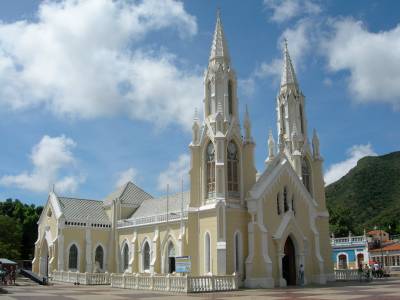





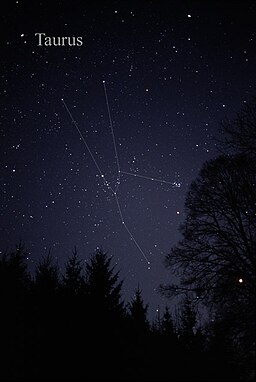
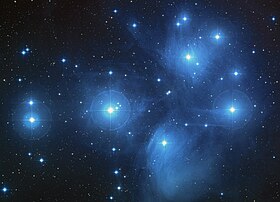









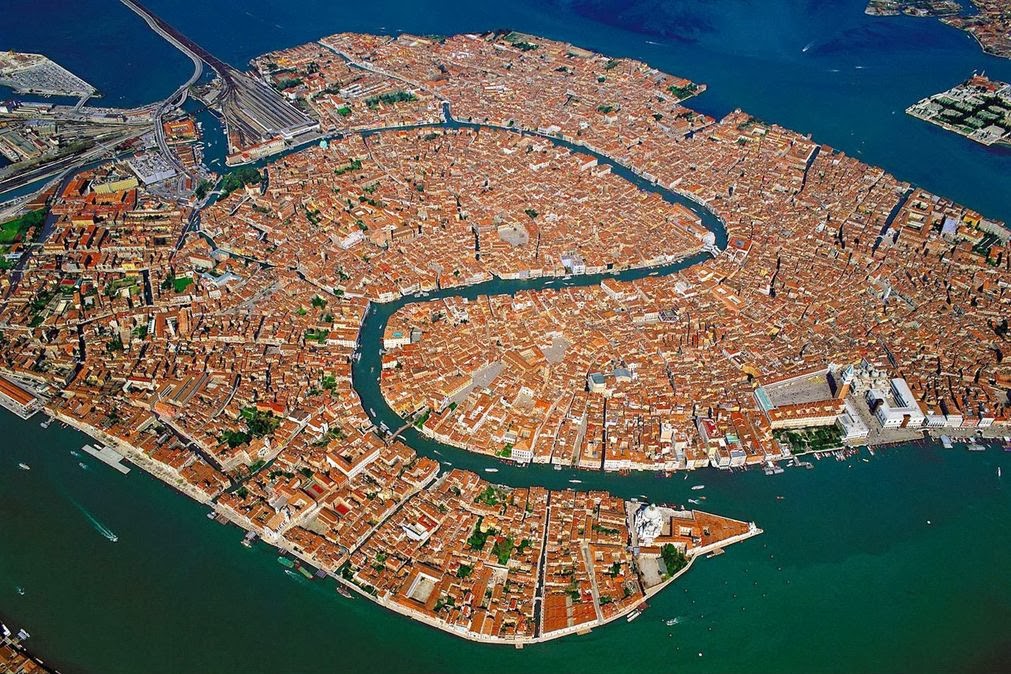

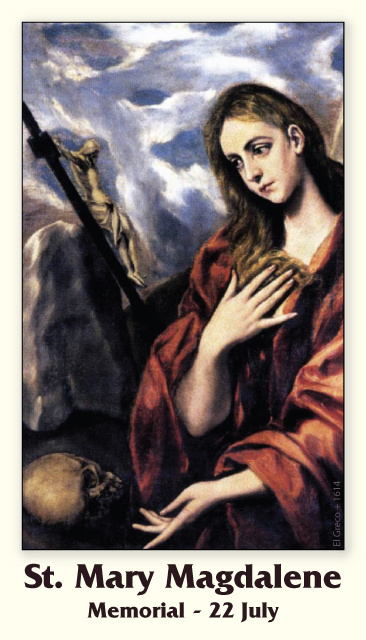

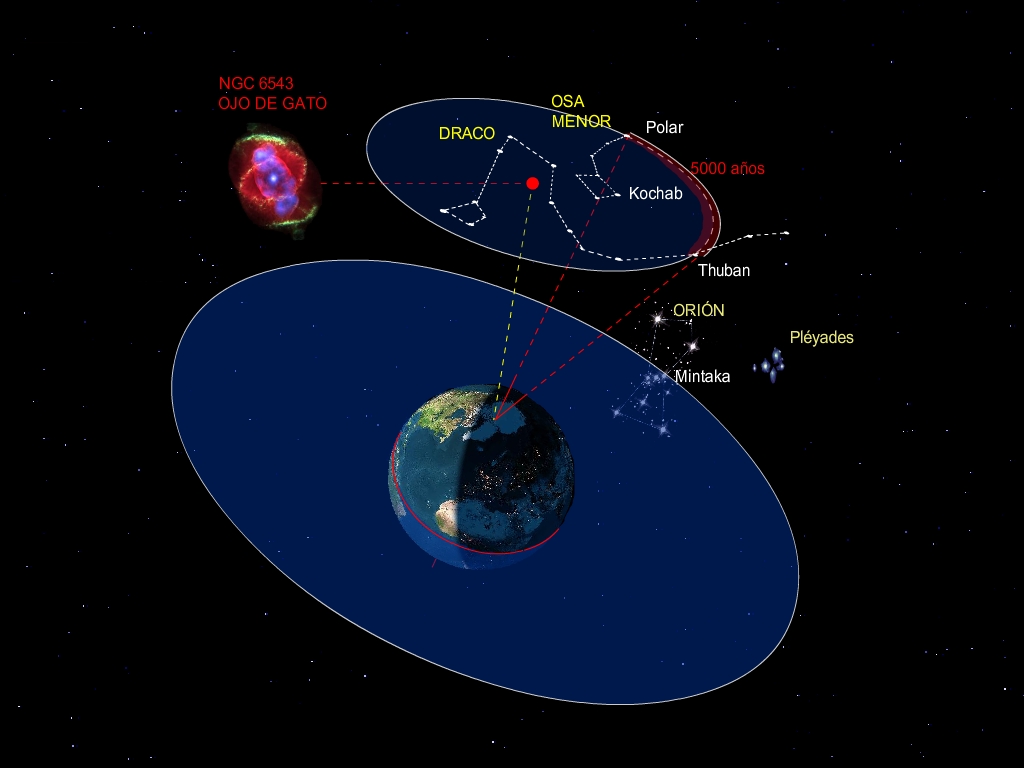


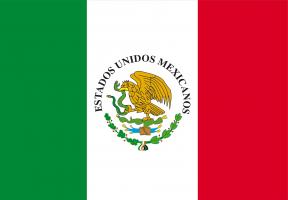




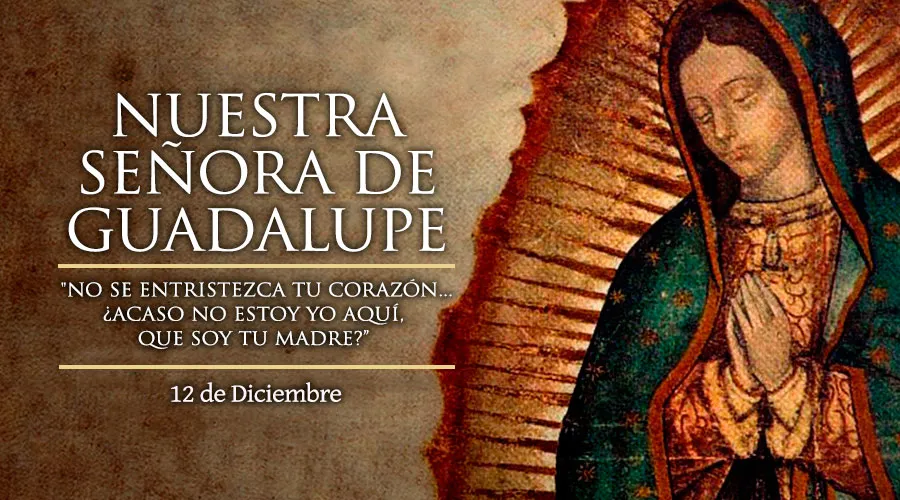


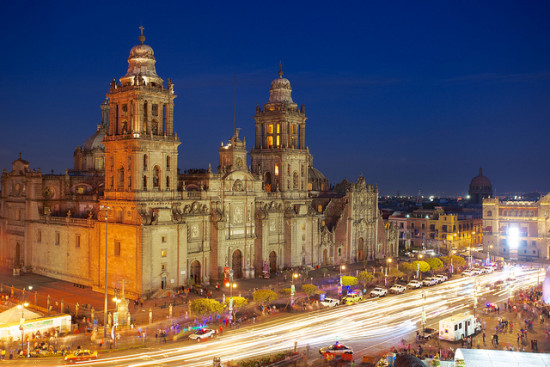
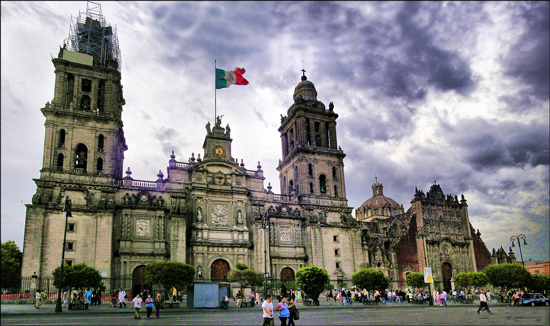





 There are many references to bull worship throughout religions worldwide. The name
There are many references to bull worship throughout religions worldwide. The name








